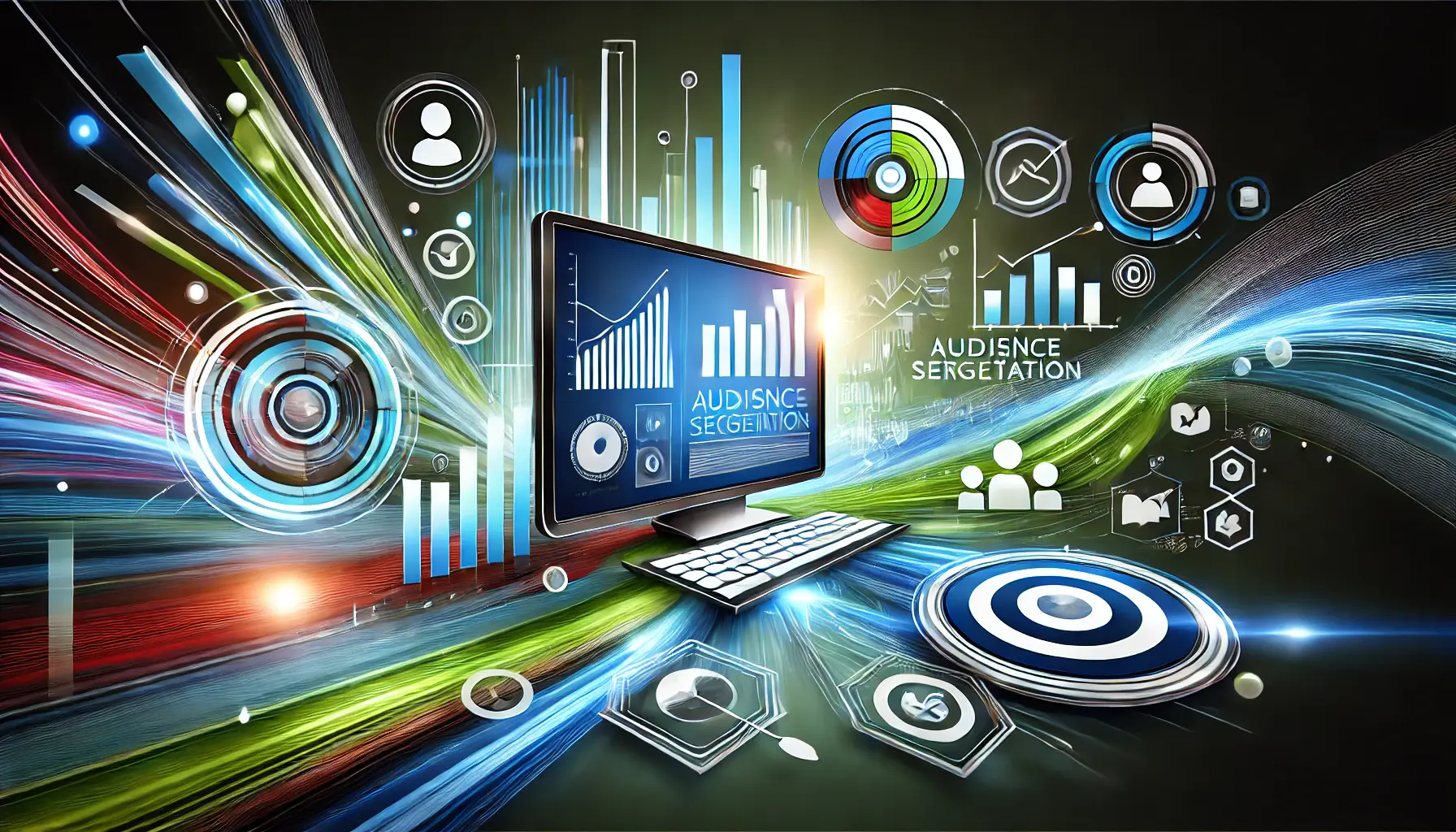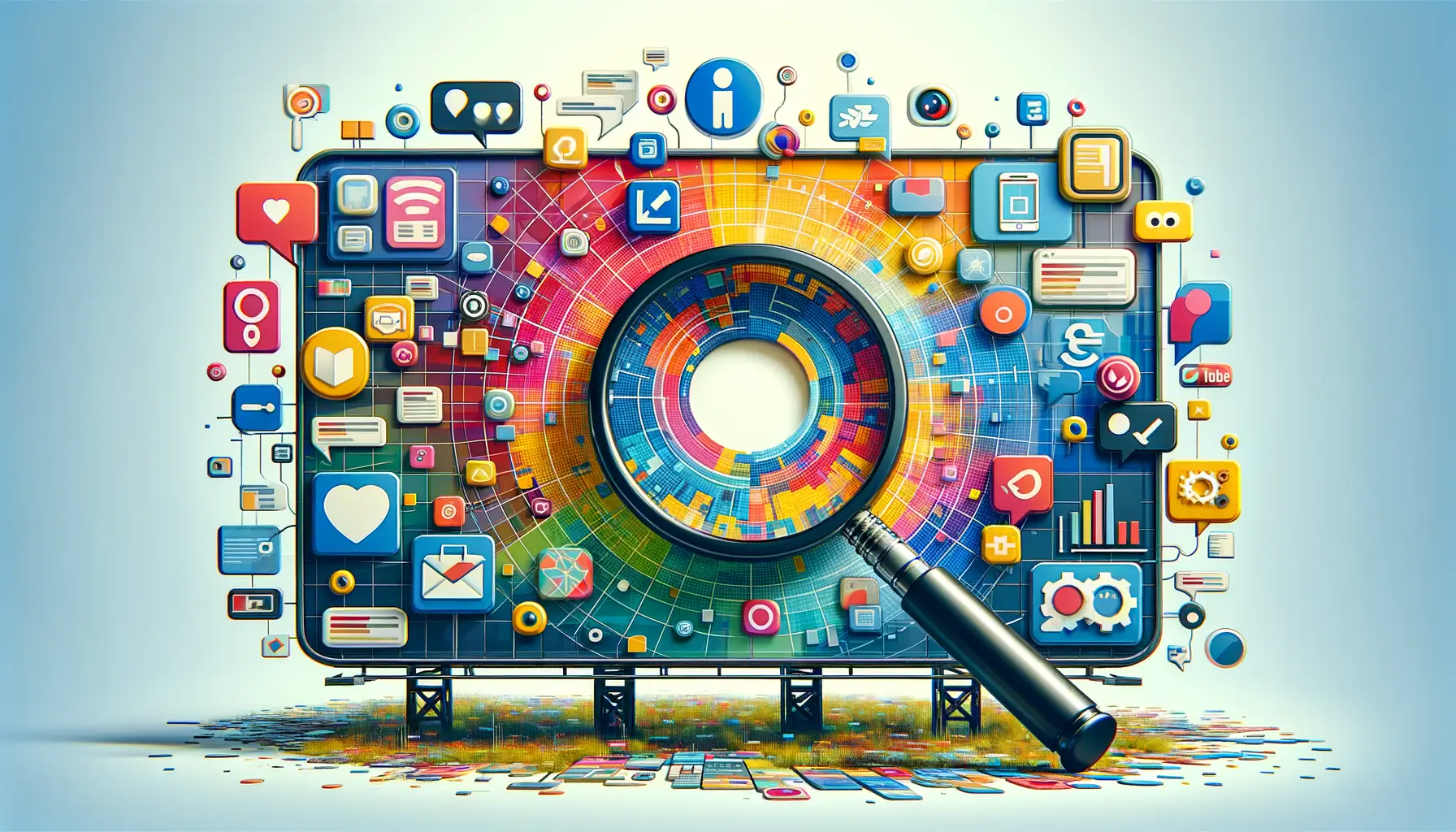In the fast-paced world of digital marketing, capturing the attention of your audience is a challenging task.
With so many brands competing for the same audience, how will you make sure that your Google Ads stand out?
The answer lies in content personalization.
By tailoring your ad content to match the unique preferences and behaviors of your audience, you can create campaigns that not only attract clicks but also drive meaningful engagement.
This article explores the concept of content personalization and provides actionable insights to help you master its use in your Google Ads strategy.
- What is Content Personalization in Google Ads?
- How to Use Data to Drive Personalization in Google Ads
- Best Practices for Implementing Content Personalization in Google Ads
- Measuring and Analyzing the Impact of Content Personalization in Google Ads
- Future Trends in Content Personalization for Google Ads
- Mastering Content Personalization in Google Ads
- Frequently Asked Questions on Content Personalization in Google Ads
What is Content Personalization in Google Ads?
Content personalization in Google Ads refers to the practice of creating tailored ad experiences that resonate with individual users or specific audience segments.
Unlike generic advertising, which takes a one-size-fits-all approach, personalized ads are designed to reflect the preferences, interests, and needs of your target audience.
This approach makes your ads more relevant and impactful, ultimately leading to higher conversion rates.
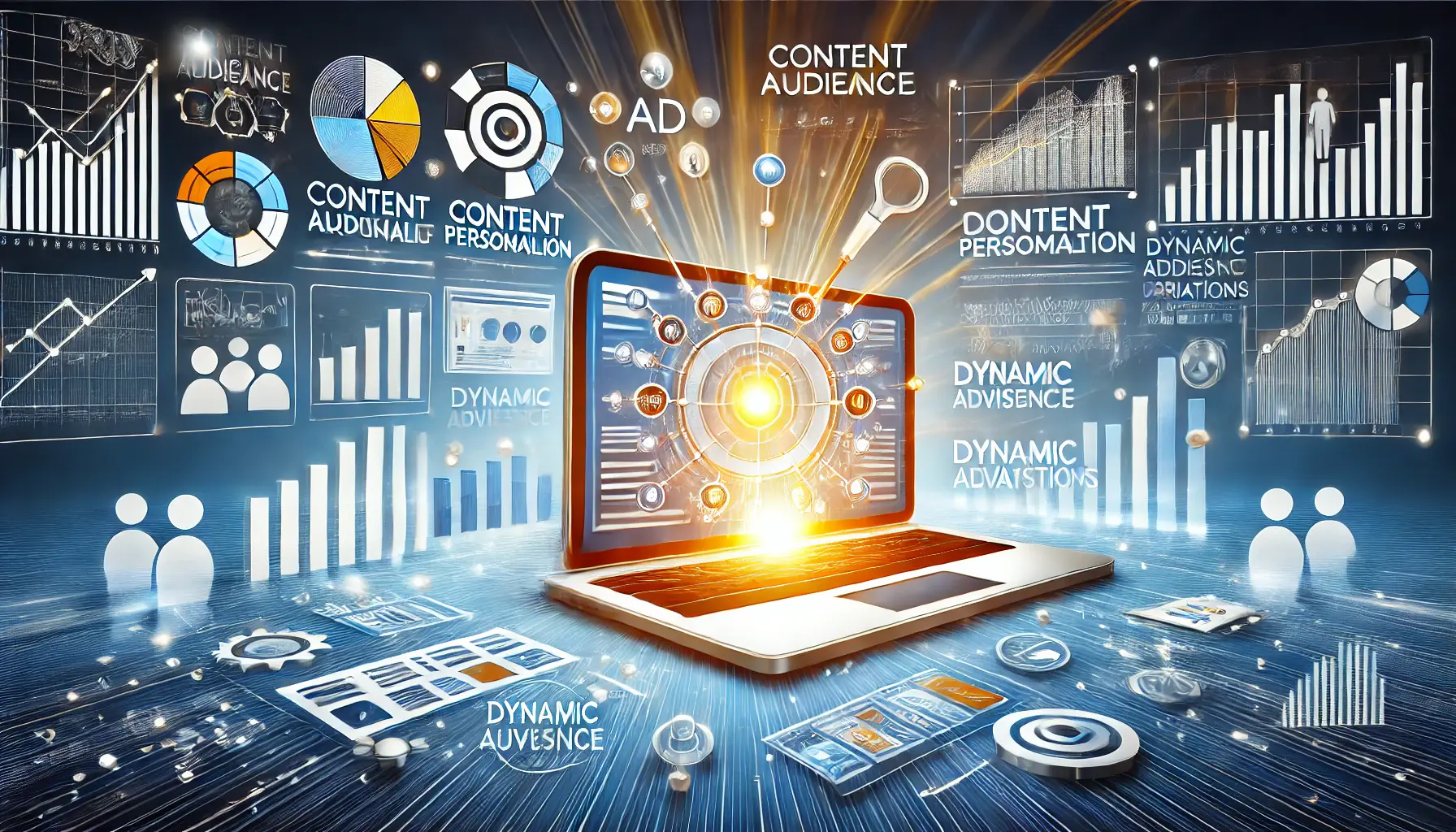
Exploring the essence of content personalization in marketing strategies.
Definition of Content Personalization
At its core, content personalization involves using data and insights to deliver customized messaging to users.
This can include personalizing the ad copy, visuals, and even the call-to-actionA prompt in an ad encouraging the audience to take a specific action, like 'Sign Up' or 'Learn More'. based on factors such as user demographicsStatistical data about a population, such as age, gender, and income., online behavior, or purchase history.
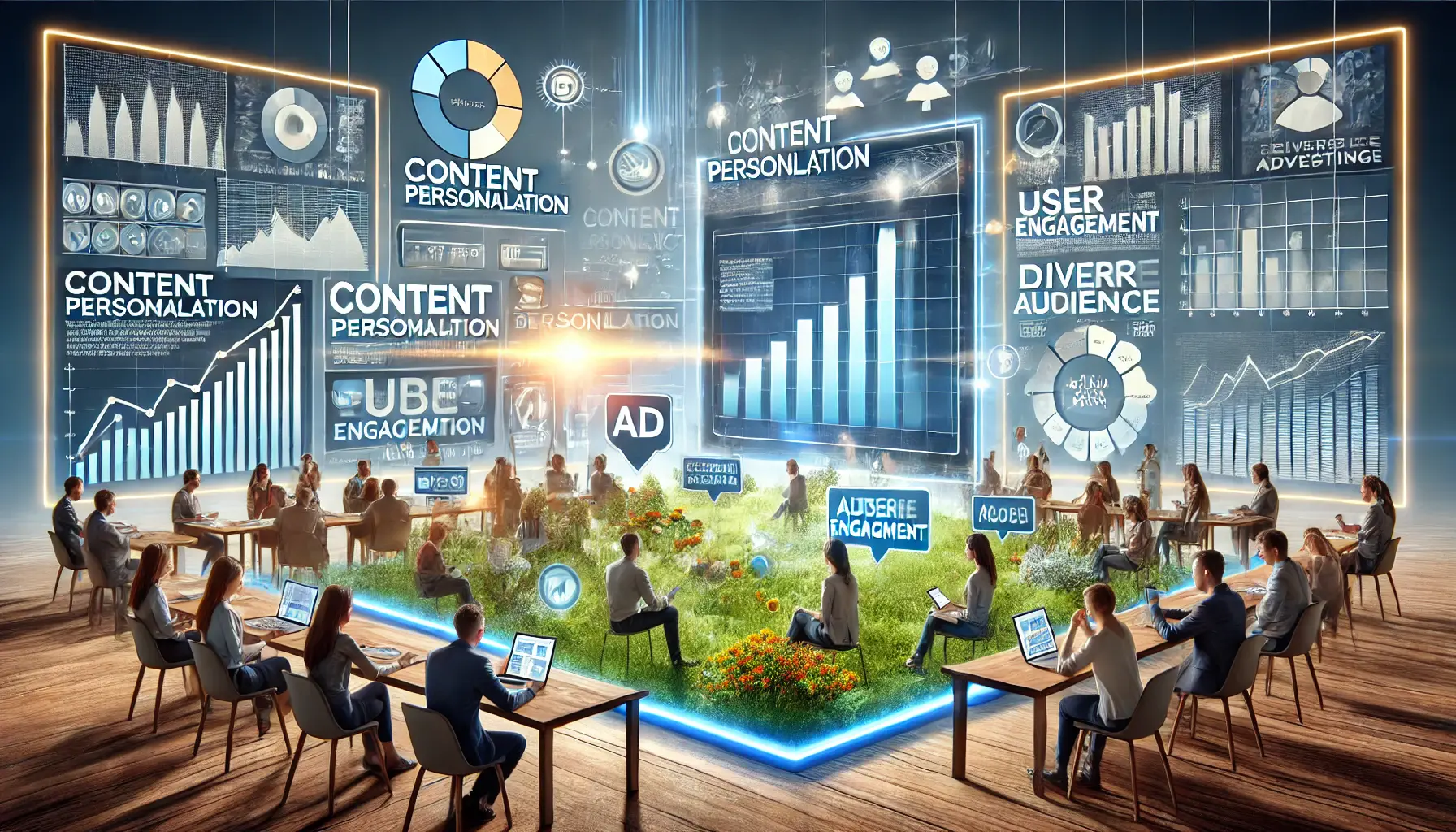
Illustrating the significance of content personalization for driving engagement and success in advertising.
Why Content Personalization Matters in Advertising
In today’s digital landscape, consumers are bombarded with ads at every turn.
Generic advertisements often get ignored, as they fail to capture the user’s interest.
However, personalized ads create a sense of connection, making users feel understood and valued.
This emotional appeal significantly increases the likelihood of engagement and conversion.
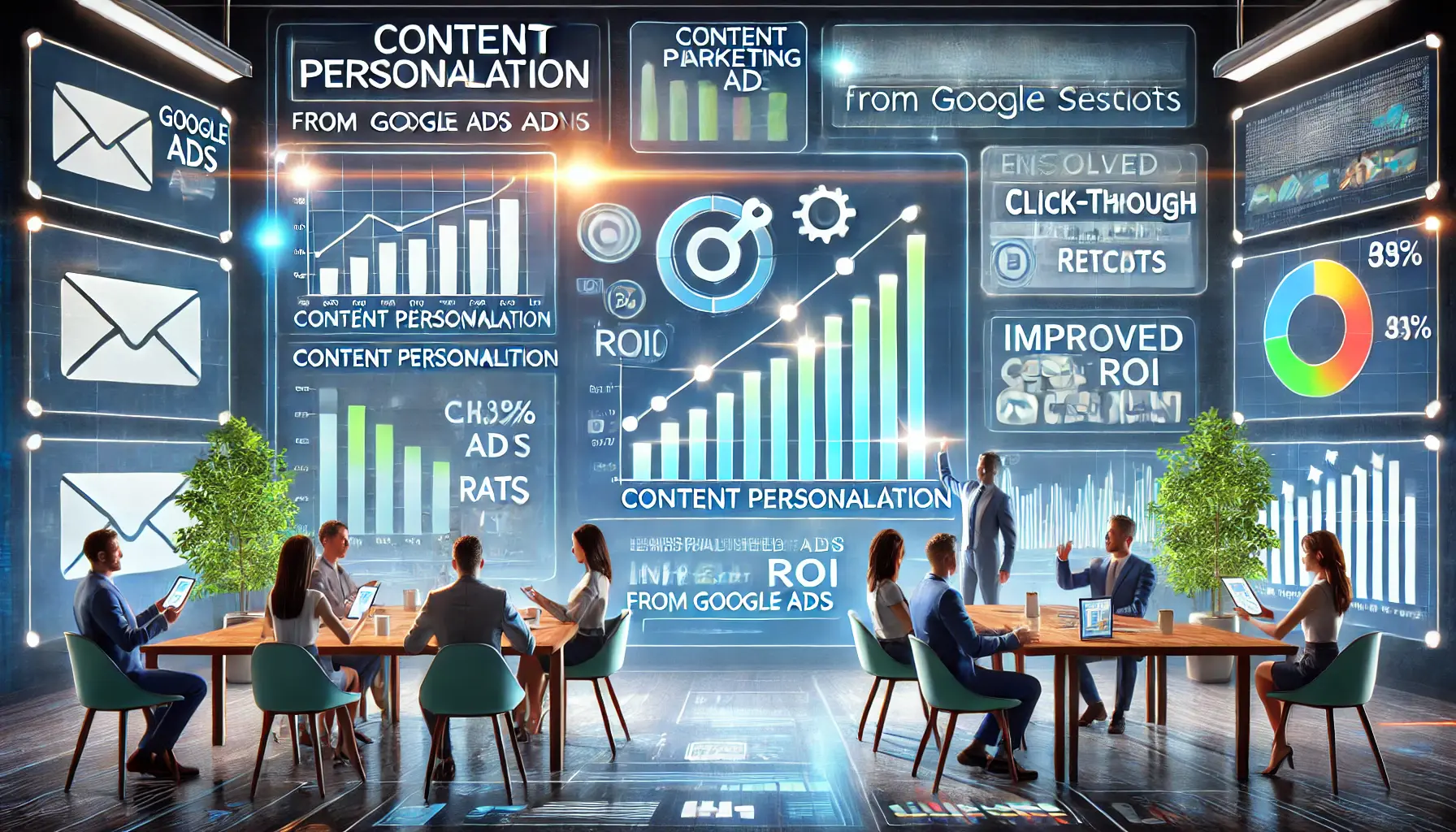
Visualizing the benefits of content personalization, including improved engagement, conversions, and ROI in Google Ads.
Benefits of Personalization for Google Ads Campaigns
- More Relevant: Personalized advertising aligns with the needs of your audience, making it more appealing.
- Increased Click-Through Rates (CTRs): Users are more likely to click on ads targeted directly at their interests.
- Better Conversion Rates: Addressing the user’s pain points means the ads drive more meaningful actions.
- Better Return on Investment (ROI): Effective personalization optimizes your ad spend by targeting the right audience with the right message.
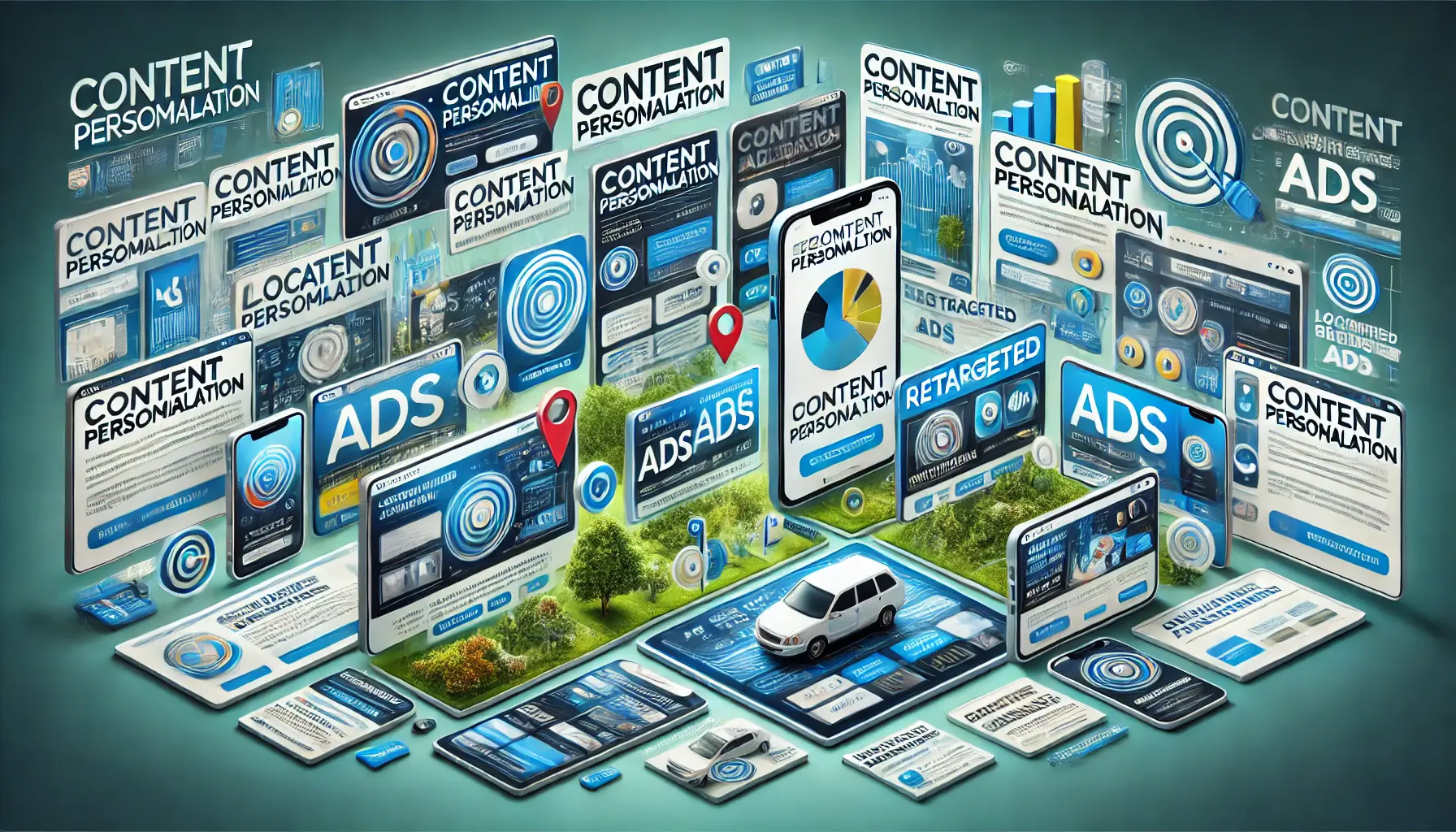
Illustrating successful content personalization with targeted ads on web and mobile platforms.
Examples of Successful Content Personalization
Different brands have implemented content personalization successfully.
This can include dynamic ads tailored to a user’s browsing history or location.
Similarly, personalized retargetingA marketing strategy that shows ads to users who have previously interacted with a brand's website or app. campaigns consistently achieve higher engagement rates compared to standard advertising methods.
By understanding what content personalization entails and its benefits, you are already on the path to creating more effective Google Ads campaigns.
Next, we will explore how to use data to drive this personalization strategy.
Content personalization in Google Ads focuses on tailoring ad experiences to match user preferences, improving engagement and conversion rates.
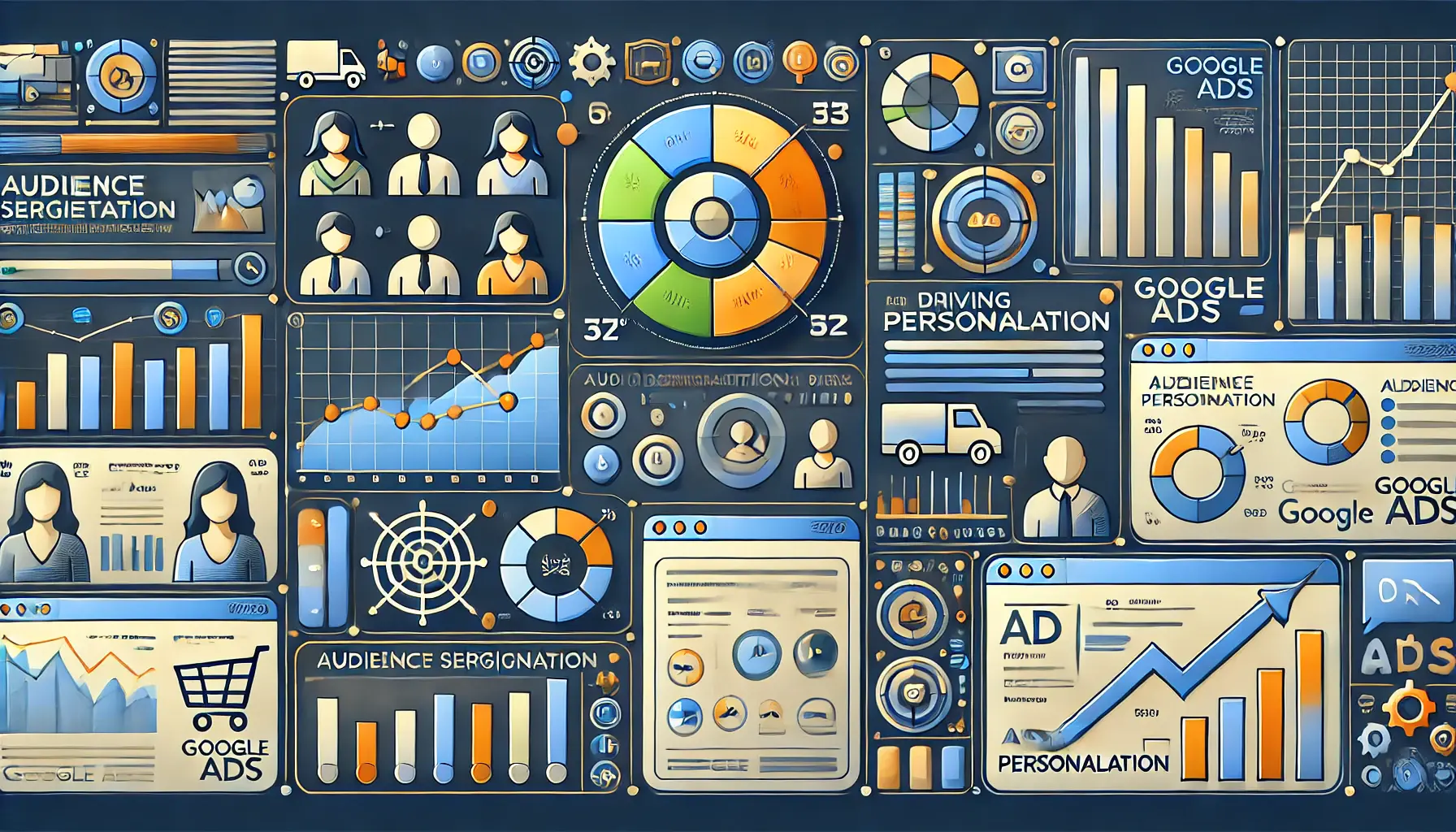
Visualizing the data-driven approach to ad personalization with analytics and audience insights.
How to Use Data to Drive Personalization in Google Ads
Harnessing data effectively is crucial for implementing content personalization in your Google Ads campaigns.
By understanding and segmenting your audience, leveraging behavioral insights, and utilizing the right tools, you can create personalized ad experiences that resonate with users and drive better results.
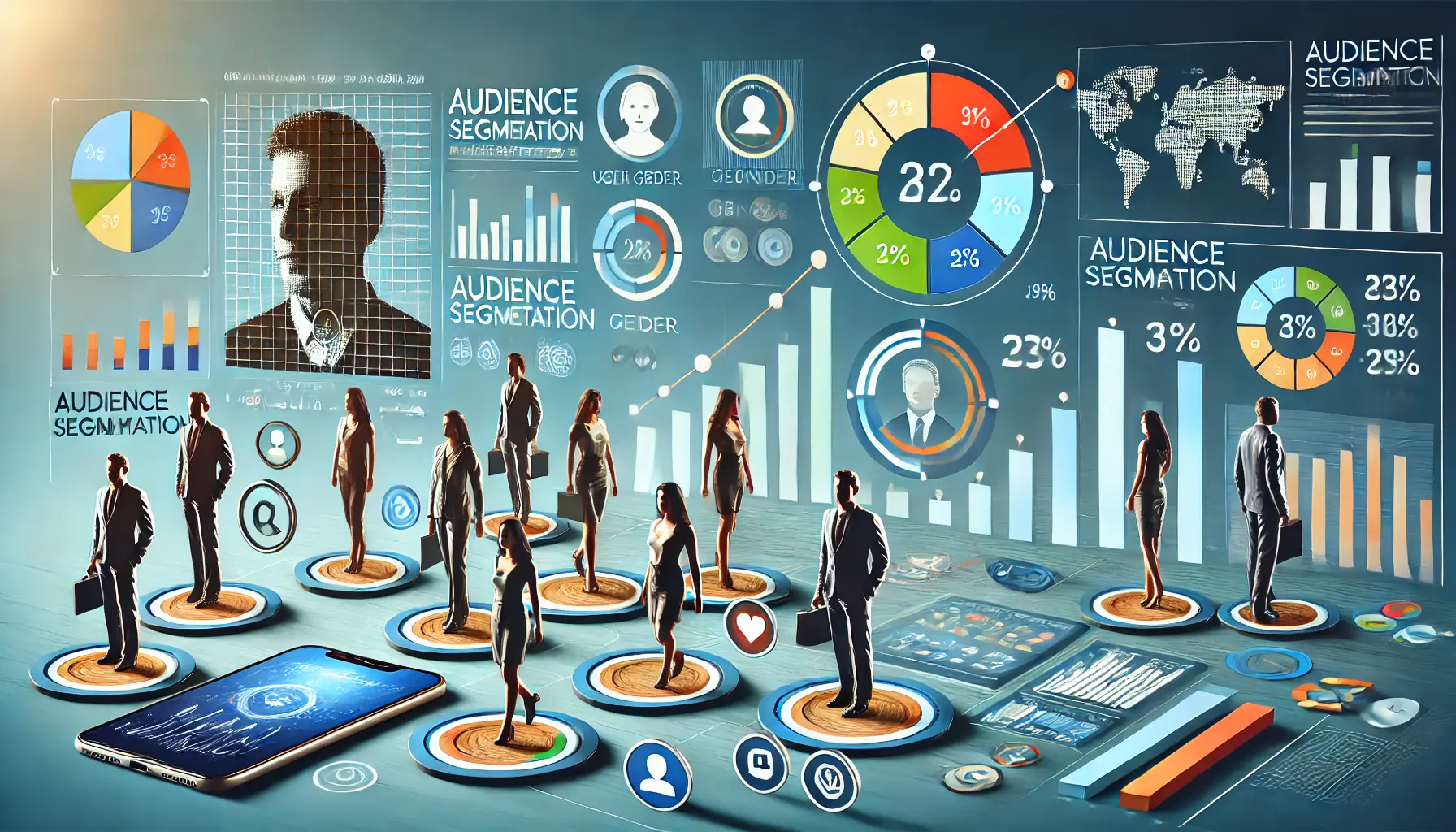
Illustrating how audience segmentation works in digital marketing through user profiles and data analysis.
Understanding Audience Segmentation
Segmentation involves dividing your target market into distinct groups based on shared characteristics.
In Google Ads, this can be achieved through:
- Demographic Segmentation: Categorizing users by age, gender, income level, education, etc.
- Geographic Segmentation: Targeting users based on their location, such as country, region, or city.
- Psychographic Segmentation: Grouping users by interests, lifestyle, and values.
- Behavioral Segmentation: Focusing on users’ interactions with your website, products, or services.
By identifying these segments, you can tailor your ad content to meet the specific needs and preferences of each group, enhancing the relevance and effectiveness of your campaigns.
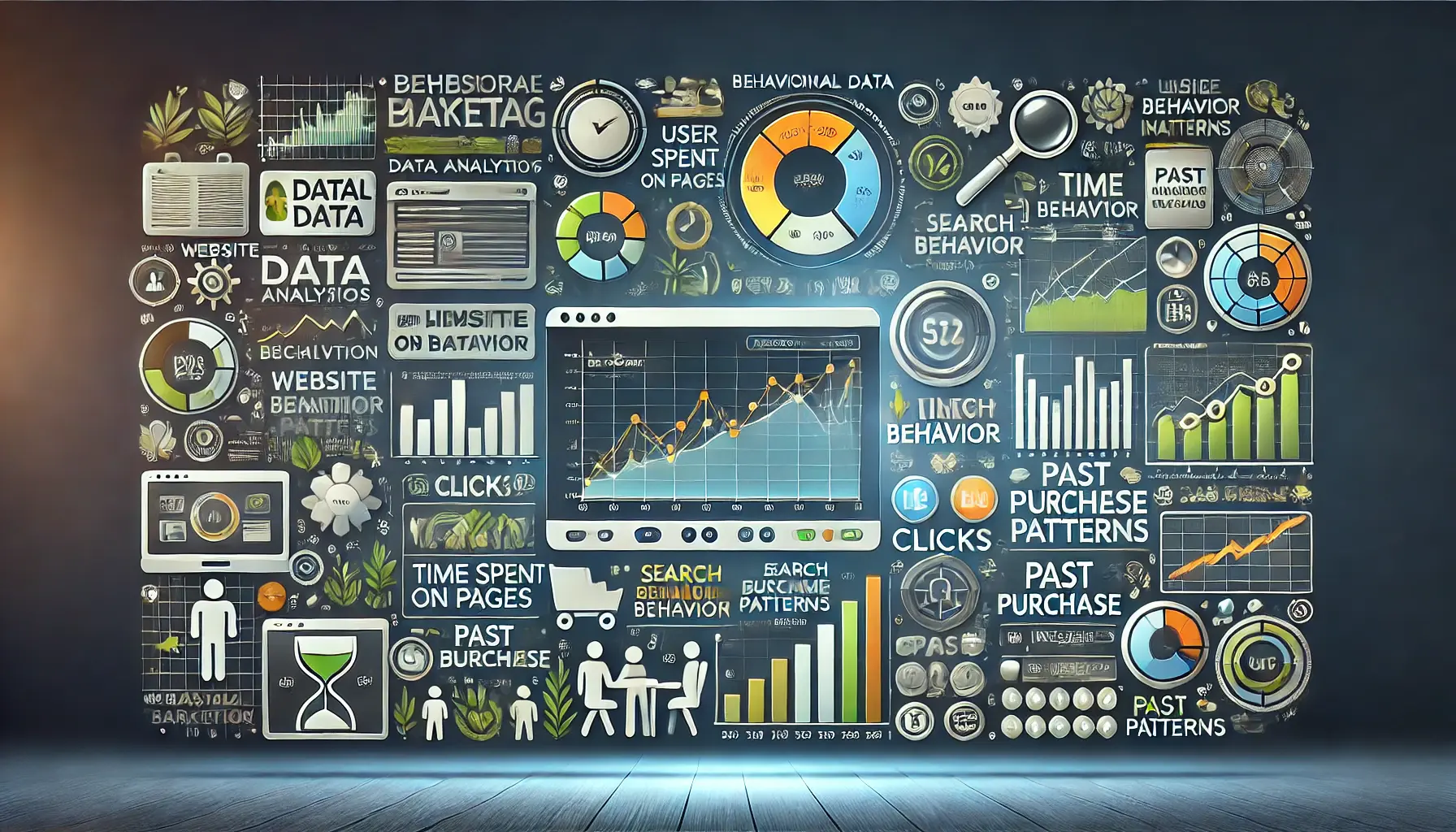
Visualizing the power of behavioral data analysis for digital marketing insights and optimization.
Leveraging Behavioral Data for Insights
Behavioral data provides insights into how users interact with your brand online.
Key sources include:
- Website Analytics: Utilize Google Analytics to track what users do on your site, such as pages visited, time spent, or actions taken.
- Search Queries: Analyzing the keywords users search for can reveal their intentions and desires.
- Purchase History: Understanding past purchases helps predict future buying behavior and preferences.
Utilizing this data allows you to create personalized ads that align with users’ behaviors and interests, increasing the likelihood of engagement and conversion.
Visualizing tools and metrics for evaluating the effectiveness of personalized advertising campaigns.
Tools and Metrics for Tracking Personalization Effectiveness
To measure the success of your personalized Google Ads campaigns, consider the following tools and metrics:
- Google Ads Audience Insights: Provides detailed information about the demographics, interests, and behaviors of your audience segments, helping you refine your targeting strategies.
- Conversion Tracking: Tracks user activity after viewing your ads, such as purchases or sign-ups, to evaluate how well your personalization is working.
- A/B Testing: Involves creating multiple ad variations to test which personalized elements resonate most with your audience, enabling data-driven optimization.
Regularly analyzing these metrics helps you understand the impact of your personalization strategies and make informed adjustments to enhance performance.

Illustrating the importance of privacy, data security, and compliance in digital advertising.
Privacy Considerations and Compliance
While leveraging data for personalization, it’s essential to prioritize user privacy and comply with relevant regulations.
Key considerations include:
- Data Transparency: Clearly inform users about the data you collect and how it is used for ad personalization, fostering trust and compliance with privacy standards.
- User Consent: Obtain explicit consent from users before collecting or utilizing their data for personalized advertising, ensuring adherence to legal requirements.
- Data Security: Implement robust security measures to protect user data from unauthorized access or breaches, maintaining the integrity and confidentiality of personal information.
By addressing these privacy considerations, you can ethically use data to drive personalization in Google Ads while building trust with your audience and adhering to legal obligations.
Effectively using data to drive personalization involves a strategic approach to audience segmentation, insightful analysis of behavioral data, utilization of appropriate tools, and a commitment to privacy compliance.
By integrating these elements, you can create personalized ad experiences that resonate with your audience and achieve your marketing objectives.
Effective use of data, such as segmentation and behavioral insights, is key to creating personalized Google Ads campaigns.
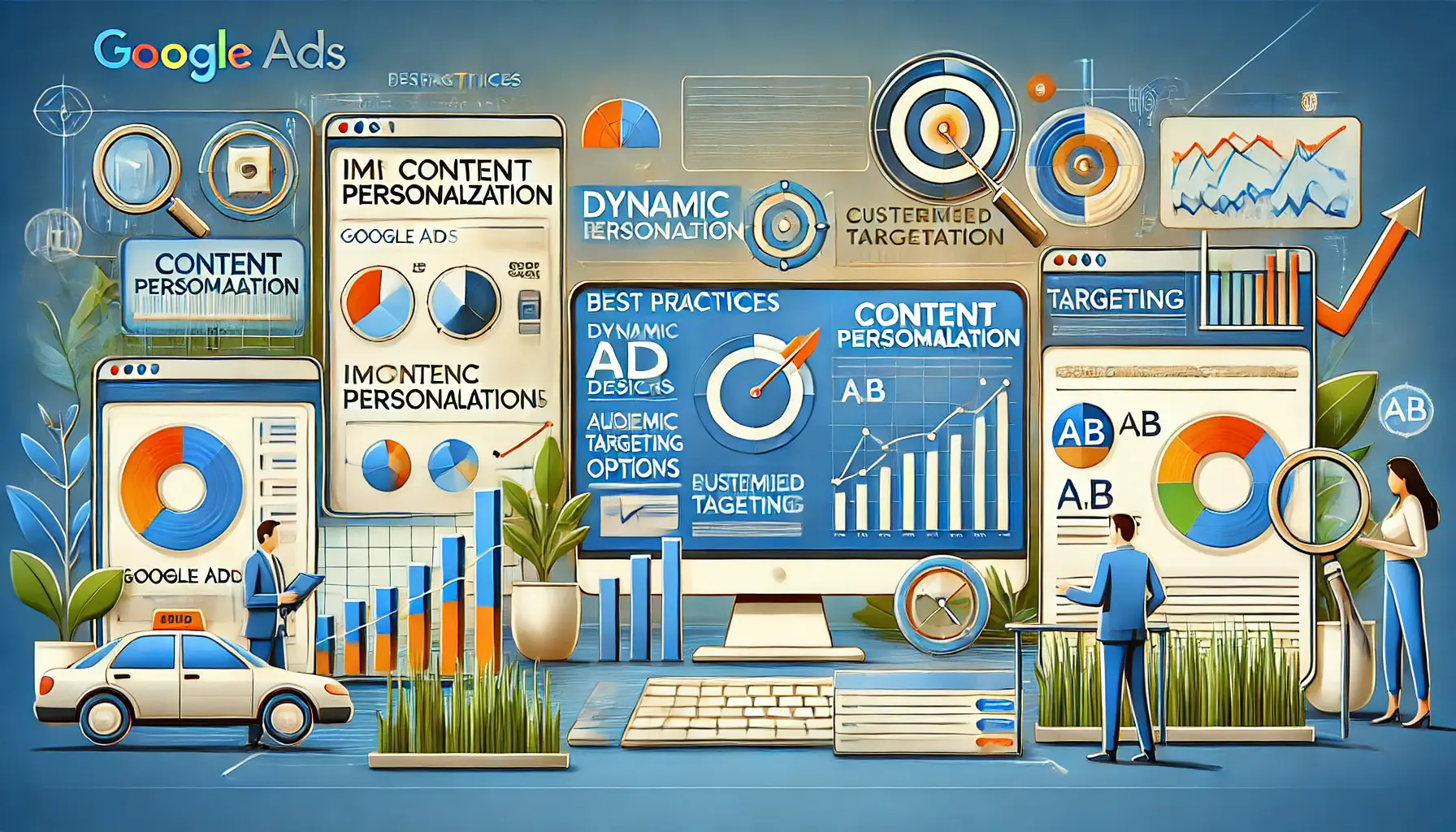
Visualizing the best practices for optimizing personalized content in Google Ads campaigns.
Best Practices for Implementing Content Personalization in Google Ads
Implementing effective content personalization in your Google Ads campaigns requires a strategic approach that combines creativity with data-driven insights.
By focusing on personalized ad copy, optimized landing pages, dynamic contentContent that changes automatically based on user behavior or preferences., and rigorous testing, you can enhance user engagement and drive conversions.
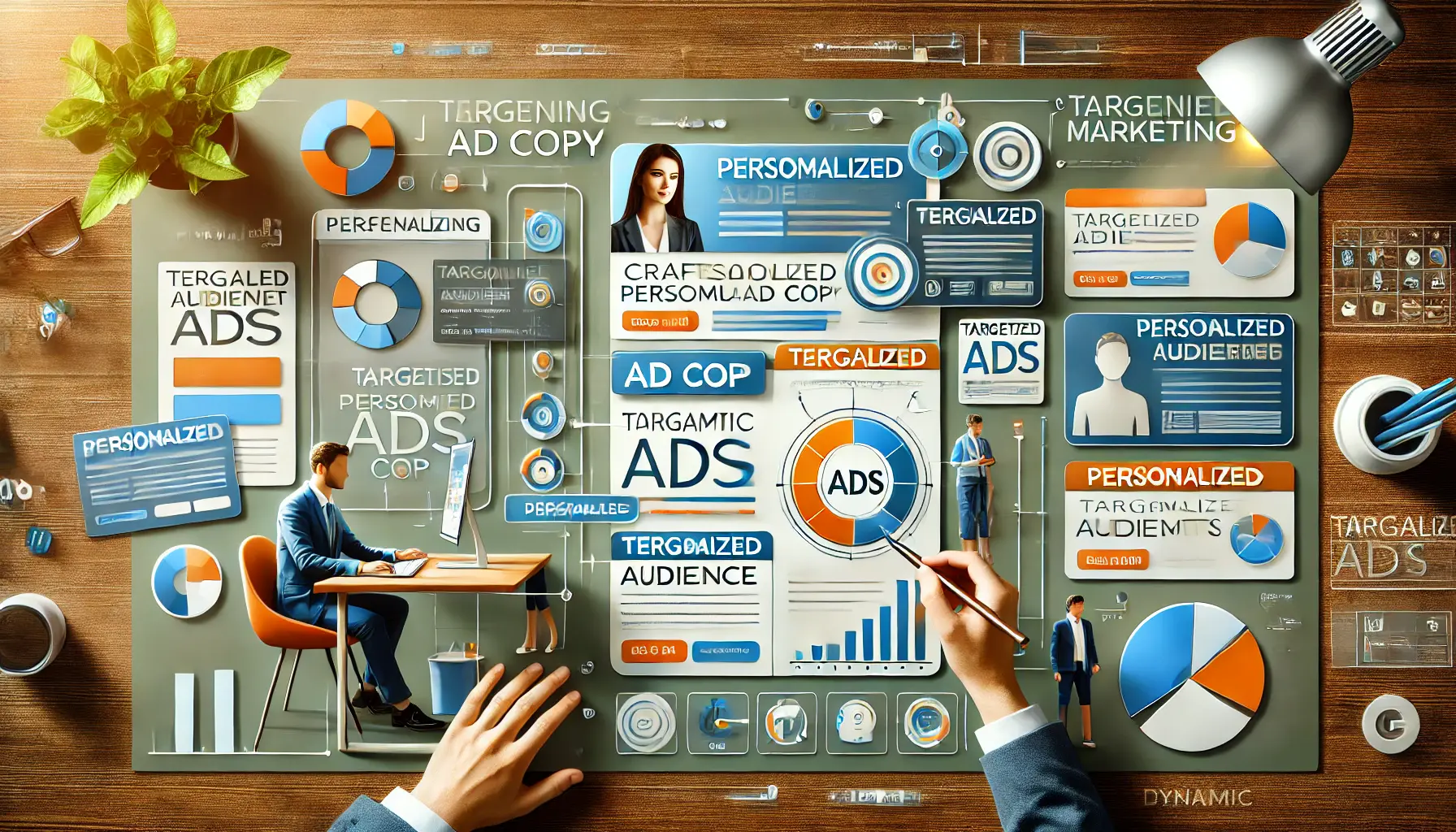
Visualizing the creative process of crafting personalized ad copy for specific audience segments.
Crafting Personalized Ad Copy
Creating ad copy that speaks directly to your audience’s needs and interests is crucial.
Consider the following strategies:
- Use Targeted Messaging: Create ad copy that speaks to the unique pain points and desires of various audience segments, making your ads more relevant and appealing to users.
- Incorporate Personalization Tokens: Use dynamic keyword insertion to automatically customize ad text to match user search queries, increasing ad relevance.
- Align with User Intent: Make sure your ad copy aligns with the intent of the user’s search query, whether informational, navigational, or transactional.
By implementing these practices, your ads can resonate more deeply with potential customers, leading to higher engagement rates.
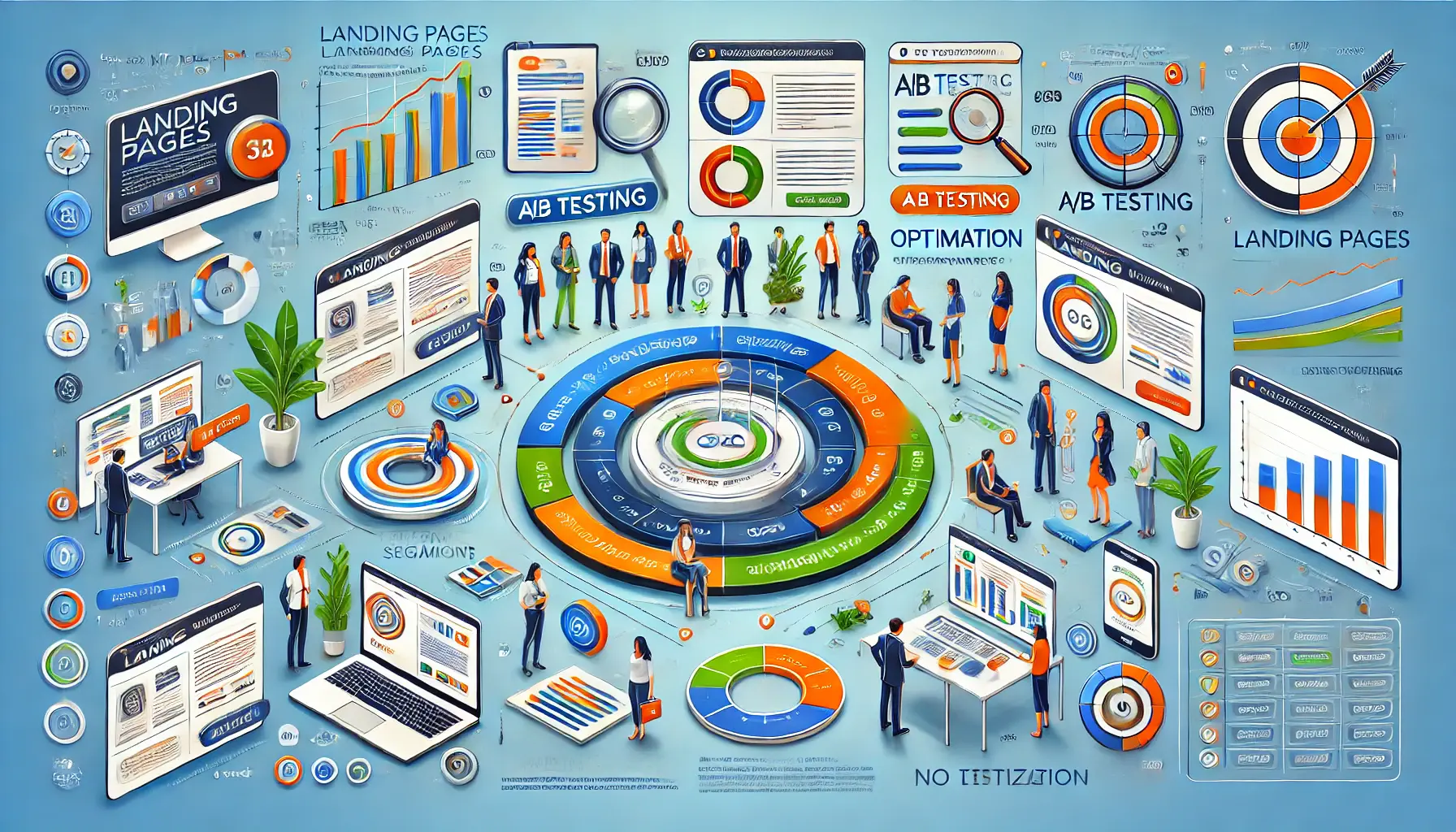
undefined
Optimizing Landing Pages for Different Audiences
Once a user clicks on your ad, the landing page should continue the personalized experience.
Key considerations include:
- Consistency: Ensure that the messaging and design of your landing page align with the ad copy, providing a seamless user journey.
- Segmentation: Create multiple landing pages tailored to different audience segments, each addressing specific needs and preferences.
- Dynamic Content: Implement dynamic content elements that adjust based on user data, such as location or past behavior, to enhance relevance.
Personalized landing pages can significantly improve conversion rates by providing users with content that directly addresses their interests and needs.
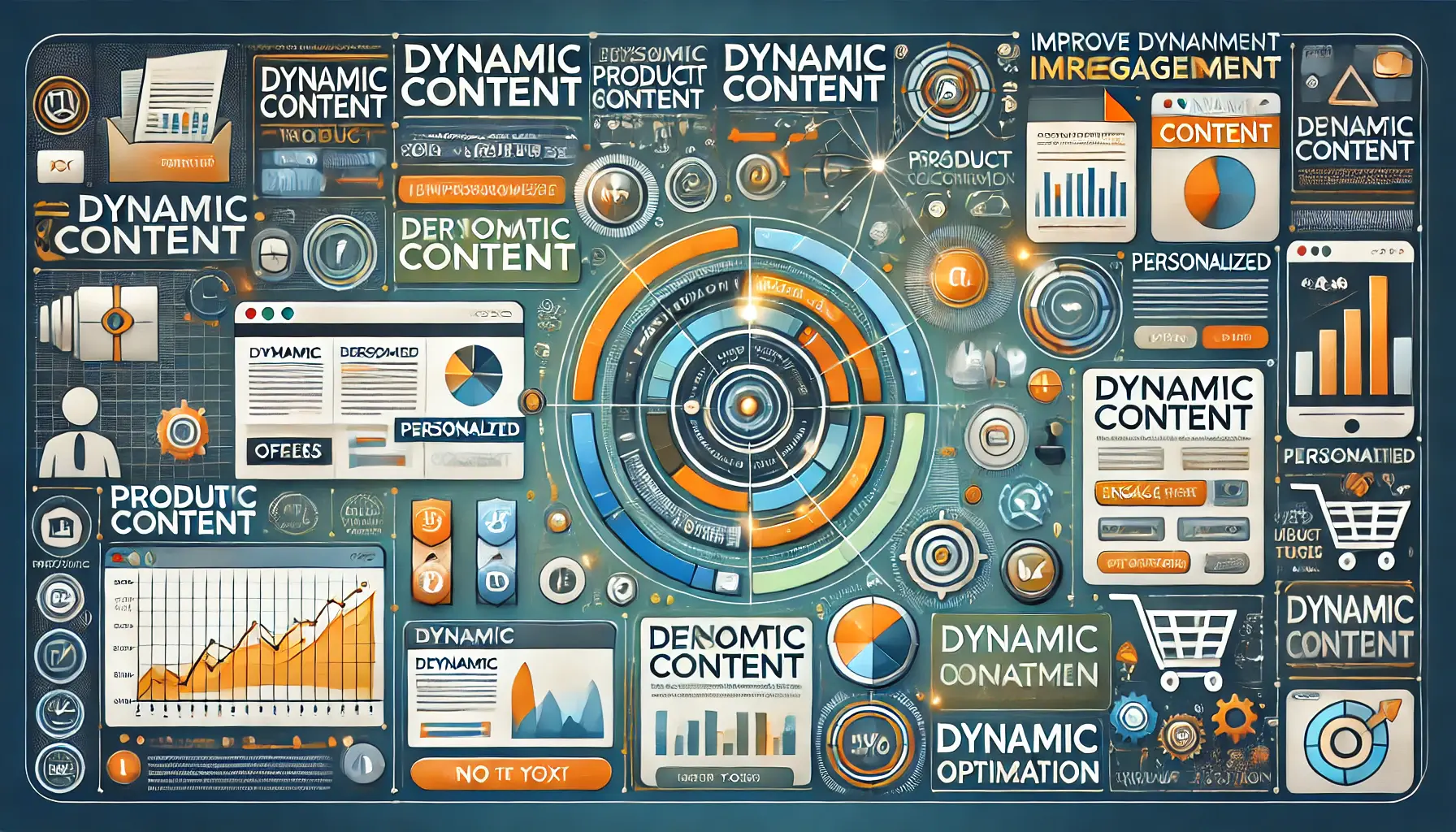
Visualizing the use of dynamic content to enhance user engagement through personalized experiences.
Using Dynamic Content to Improve Engagement
Dynamic content enables your ads and landing pages to dynamically adjust to individual user characteristics in real time.
To utilize dynamic content effectively, employ the following methods:
- Dynamic Search Ads: Use Google’s Dynamic Search Ads to automatically generate headlines and landing pages that match user search queries.
- Dynamic Remarketing: Serve ads with products or services users have previously viewed on your site, reminding them of their interest.
- Personalized Recommendations: Incorporate product or content recommendations based on users’ past behaviors and preferences.
By employing dynamic content, you can create a more engaging and personalized user experience, encouraging users to take desired actions.

undefined
A/B Testing for Personalization Success
Continuous testing is vital to understand what resonates with your audience.
Implement A/B testingA method of comparing two versions of a webpage or ad to see which performs better. by:
- Testing Variations: Provide variant ad creatives or landing page iterations to test headlines, imagery options, and multiple calls-to-action.
- Performance Analysis: Use Google Ads and Analytics to closely gauge how different variations are received and perform against one another.
- Iteration Based on Data: Refine your campaigns by focusing on the aspects that yield the highest levels of engagement and conversions.
Regular A/B testing allows you to continuously optimize your campaigns so that your personalization efforts drive user engagement and conversions effectively.
By following these best practices, you can integrate content personalization in your Google Ads campaigns, capturing attention and building strong connections with your audience for better performance and ROI.
Follow best practices like crafting targeted ad copy, optimizing landing pages, and using A/B testing to enhance ad performance.
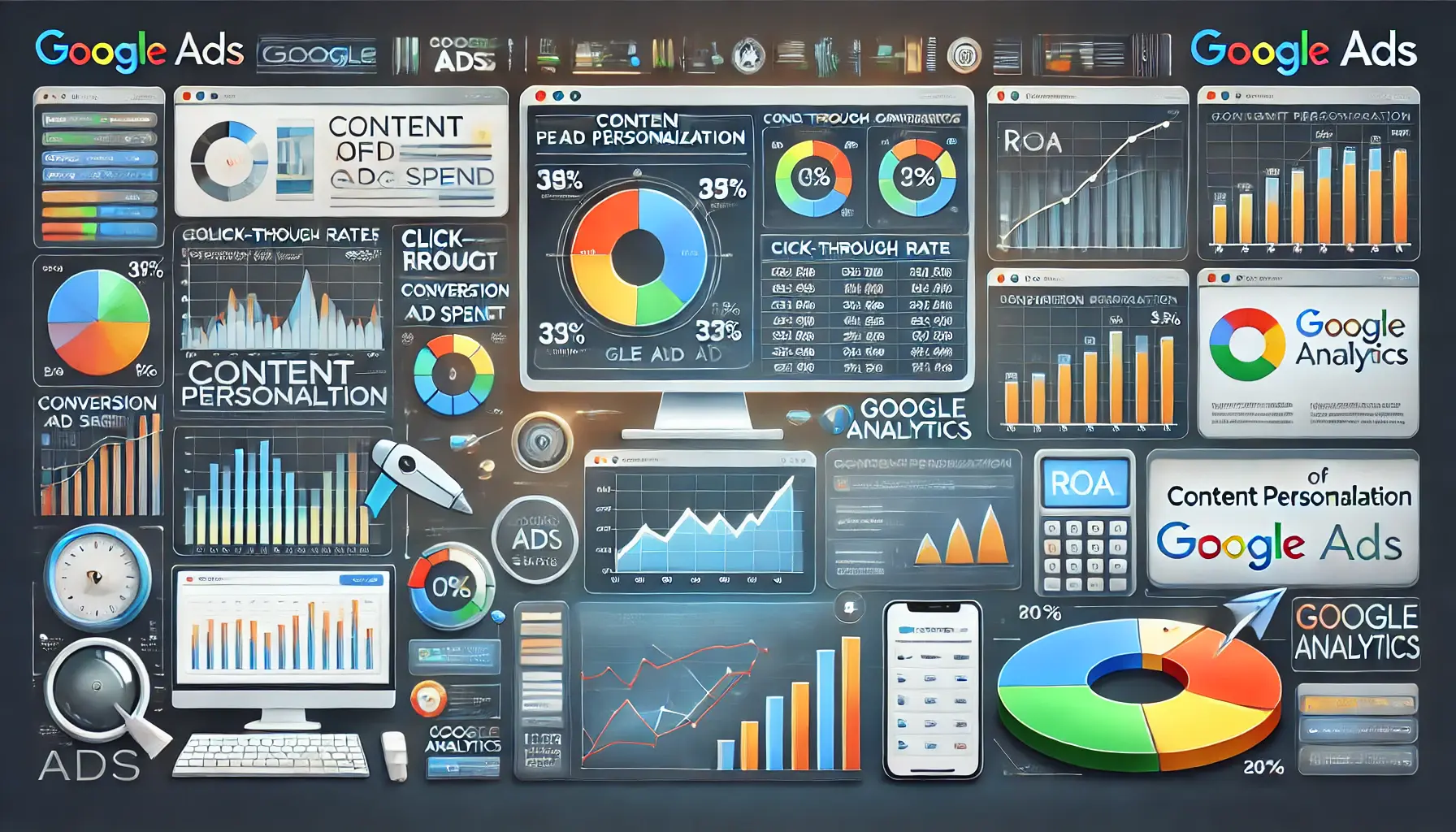
Visualizing the process of measuring and analyzing the success of content personalization in Google Ads.
Measuring and Analyzing the Impact of Content Personalization in Google Ads
Implementing content personalization in your Google Ads campaigns is a strategic move, but understanding its effectiveness requires diligent measurement and analysis.
By focusing on key performance indicators (KPIs), utilizing appropriate tools, and making data-driven adjustments, you can optimize your personalized advertising efforts.
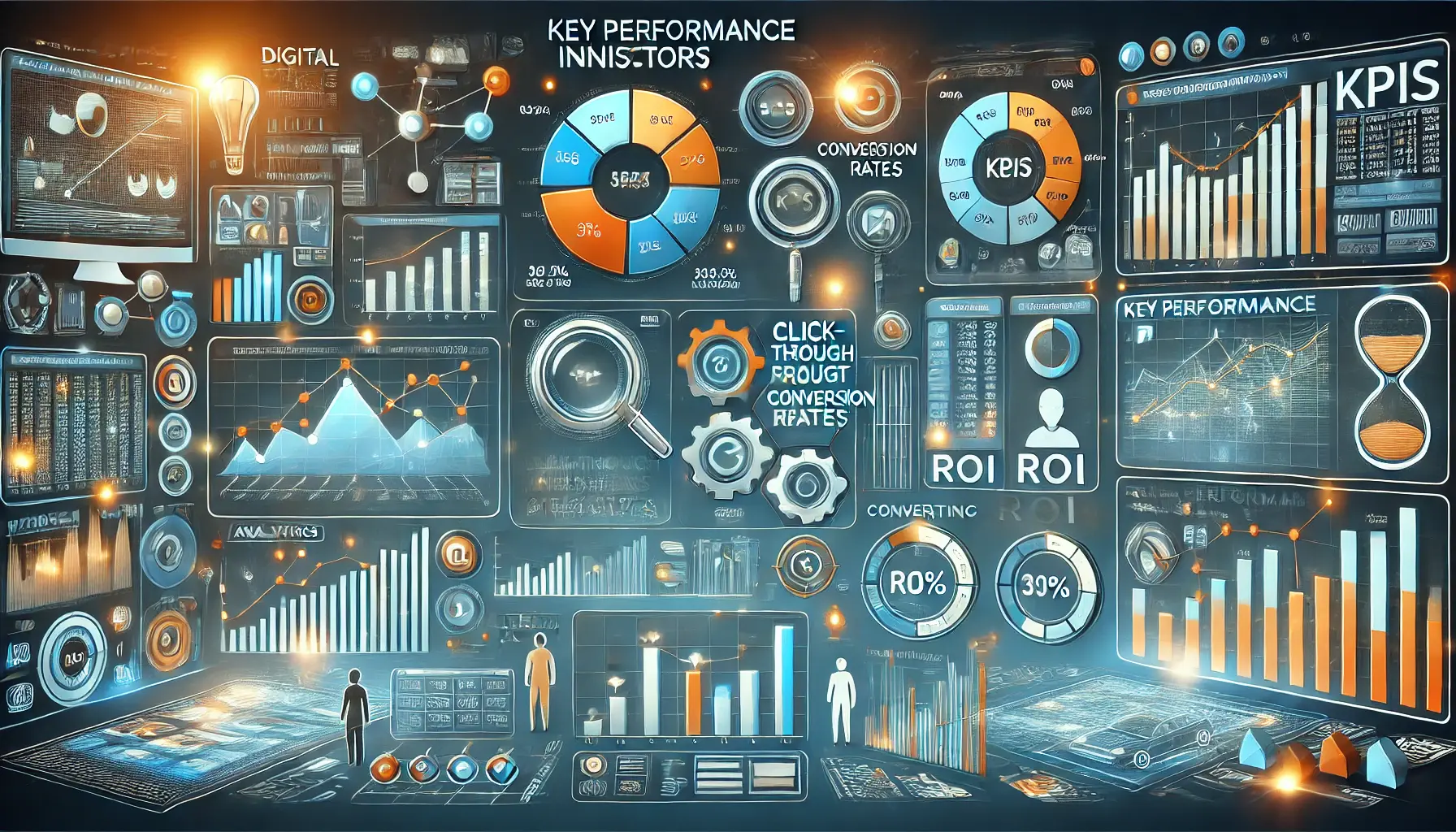
Visualizing the process of identifying and tracking key performance indicators (KPIs) for digital marketing success.
Identifying Key Performance Indicators (KPIs)
To evaluate the success of your personalized content, monitor the following KPIs:
- Click-Through Rate (CTR): A metric that determines the percentage of viewers of your ad who click it, showing relevance and appeal.
- Conversion Rate: The rate at which a certain number of clicks on your ads translate into desired actions such as purchases or sign-ups, reflecting how effective your personalization strategy has been.
- Return on Ad Spend (ROAS): The amount of revenue generated for each dollar spent on ads, useful in evaluating the financial effectiveness of your campaigns.
- Engagement Metrics: Examples include time spent on the landing page and bounce rate, helping to understand user interaction with your personalized content.
Regularly checking these KPIs will show the actual results of your personalization activities and highlight areas for improvement.
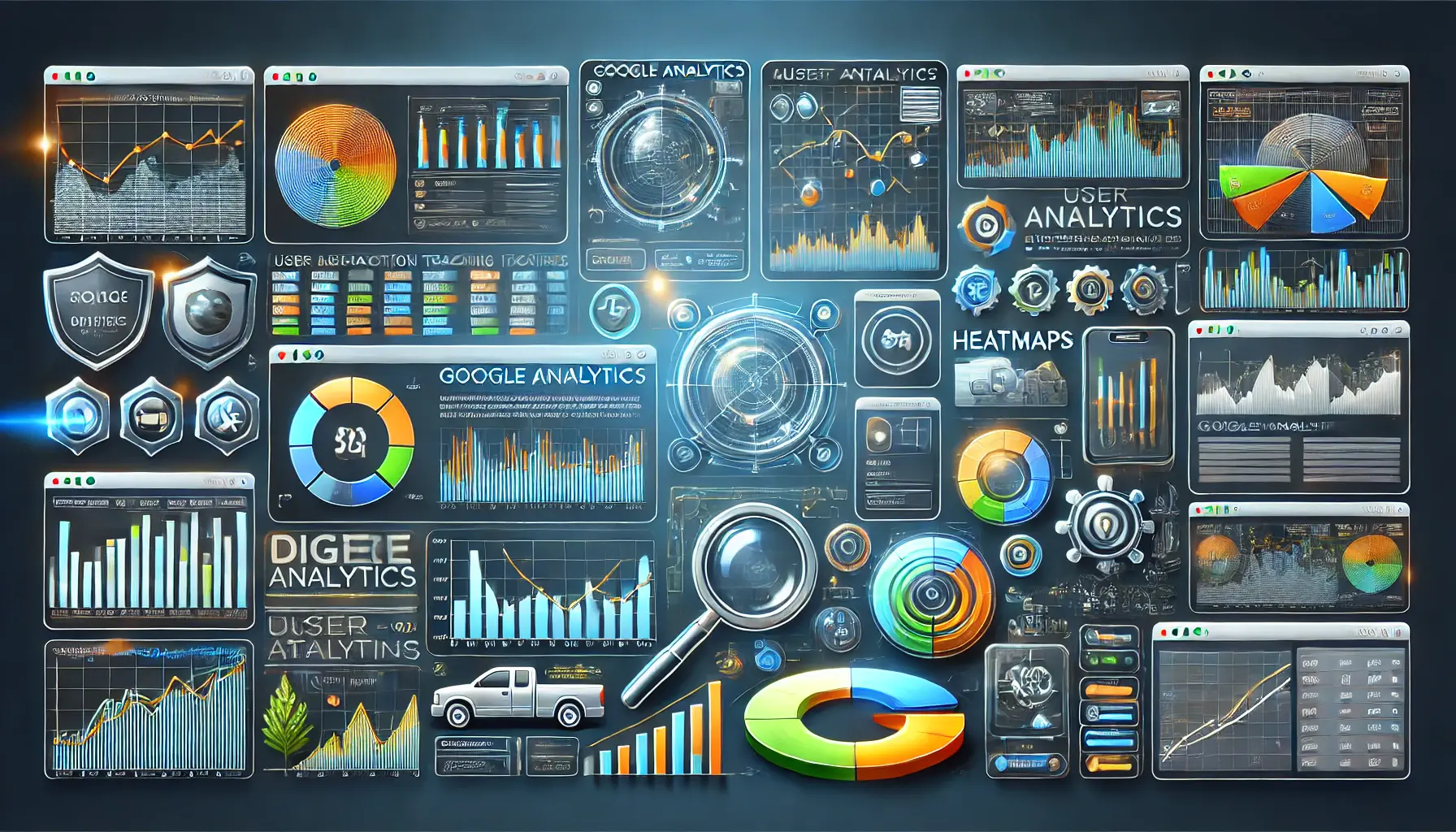
Visualizing the use of analytical tools like Google Analytics and heatmaps to track and analyze user behavior.
Utilizing Analytical Tools
Leverage the following tools to analyze your personalized Google Ads campaigns:
- Google Analytics: Offers comprehensive data on user behavior, traffic sources, and conversion paths, allowing you to assess how personalized content influences user actions.
- Google Ads Reports: Provides detailed performance reports on your ads, including CTR, conversion rates, and cost metrics, facilitating a clear understanding of your campaigns’ effectiveness.
- Heatmap Tools: Visualize user interactions on your landing pages, helping identify which personalized elements attract attention and which areas may need optimization.
These tools provide the data needed to make informed decisions about your content personalization strategies.
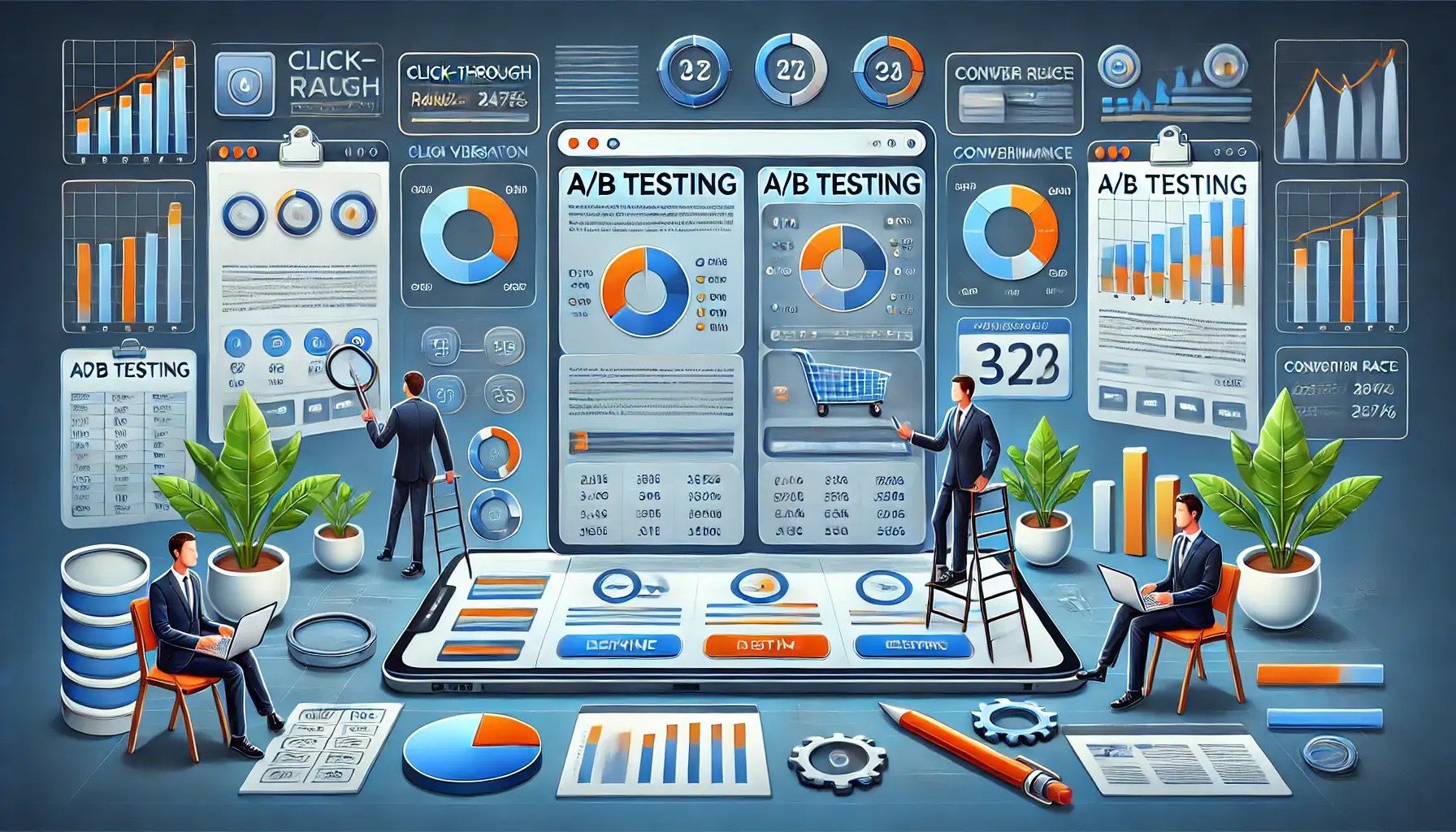
Visualizing the A/B testing process, comparing key metrics like click-through rates and conversion rates for different ad variations.
Running A/B Testing
Apply A/B testing to identify which of your personalized content is more effective by:
- Create Variations: Develop different versions of your ads and landing pages, each with different personalized elements.
- Splitting Traffic: Randomly direct portions of your audience to each variation to ensure unbiased results.
- Analyzing Outcomes: Compare the performance of each variation based on your identified KPIs to determine which approach resonates best with your audience.
Regular A/B testing allows for continuous refinement of your personalization tactics, leading to improved campaign performance.
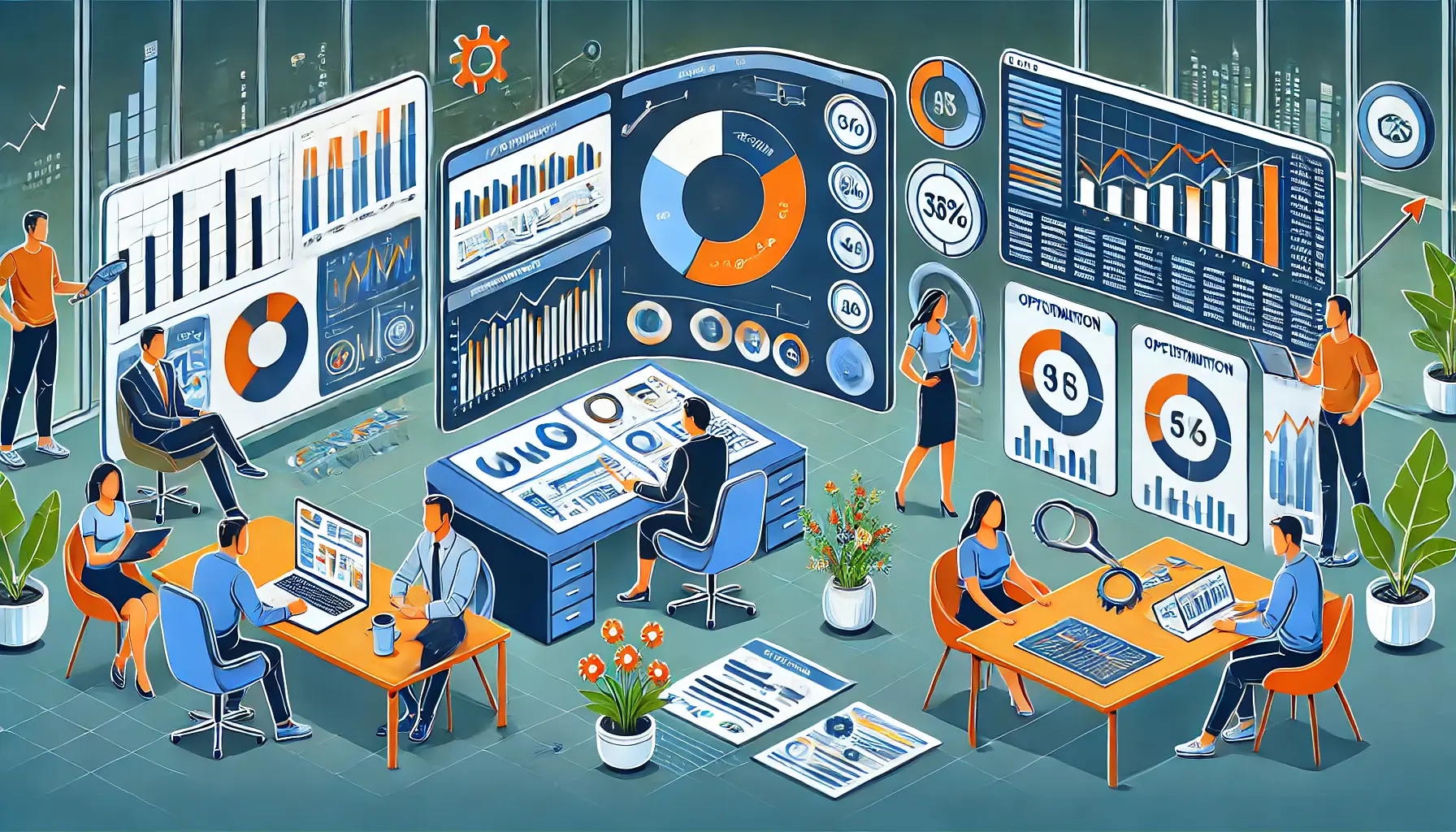
Visualizing the decision-making process for making data-driven adjustments in digital marketing campaigns.
Making Data-Driven Adjustments
Based on your analysis, implement the following adjustments:
- Optimize Underperforming Elements: Alter or replace personalized content that isn’t performing well to resonate better with users’ preferences.
- Scale Successful Strategies: Double down on well-performing personalized ads and apply successful techniques across other campaigns.
- Stay Updated: Pay attention to trends and shifting user behavior to continually refine your personalization efforts.
By making informed adjustments, you ensure your content personalization efforts stay effective and relevant.
In conclusion, measuring and analyzing the impact of content personalization in your Google Ads campaigns is indispensable for achieving the best results.
By focusing on relevant KPIs, using analytical tools, running A/B tests, and making data-driven adjustments, you can improve user engagement and drive higher conversions.
Tracking KPIs such as CTR, conversion rates, and ROAS is essential for analyzing the success of personalized ads.
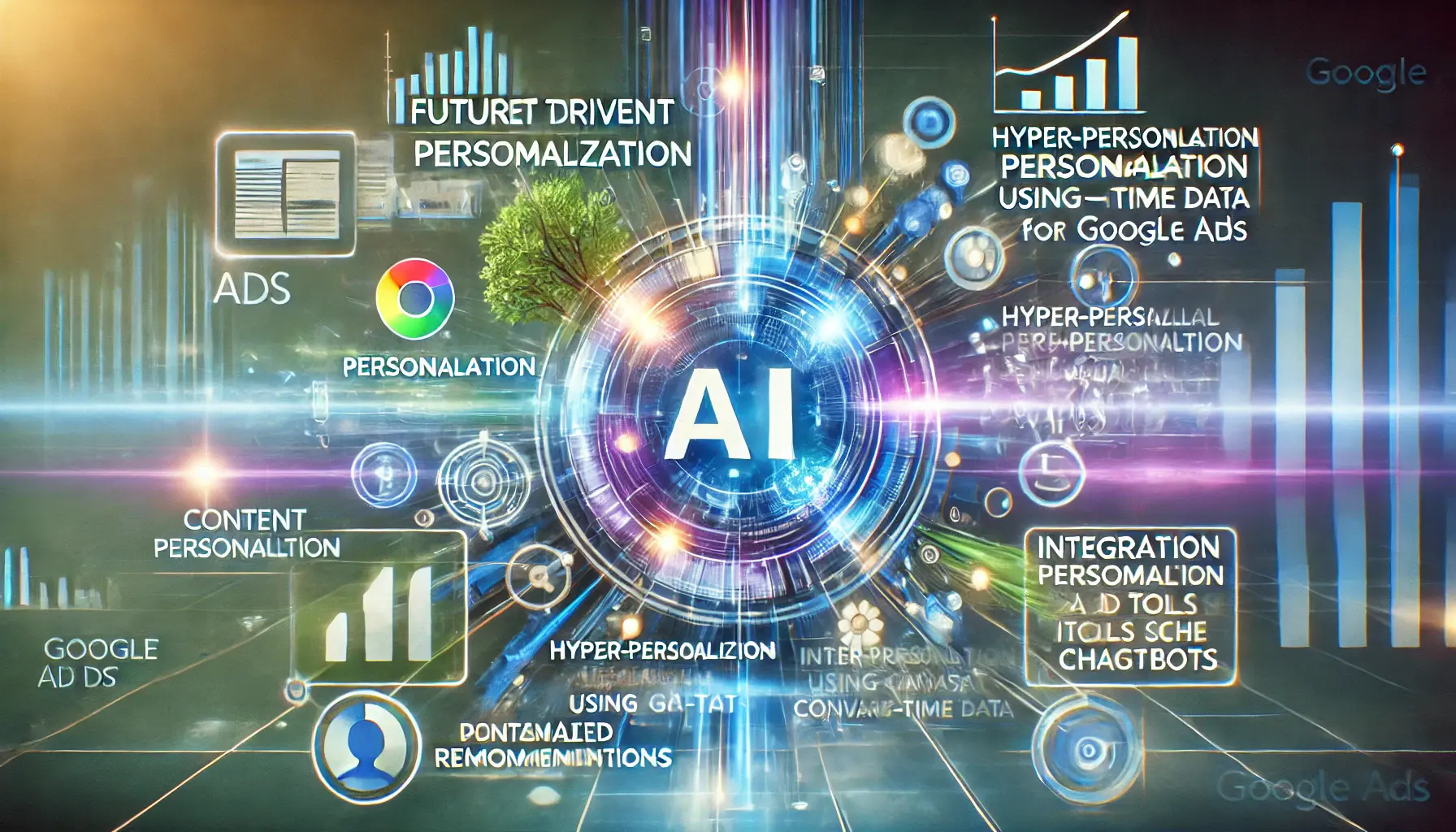
Visualizing the future of content personalization in Google Ads with AI, hyper-personalization, and real-time data.
Future Trends in Content Personalization for Google Ads
As digital marketing continues to evolve, content personalization in Google Ads is poised to become more sophisticated, leveraging advancements in artificial intelligence (AI) and data analytics.
Staying informed about these emerging trends is crucial for marketers aiming to maintain a competitive edge.
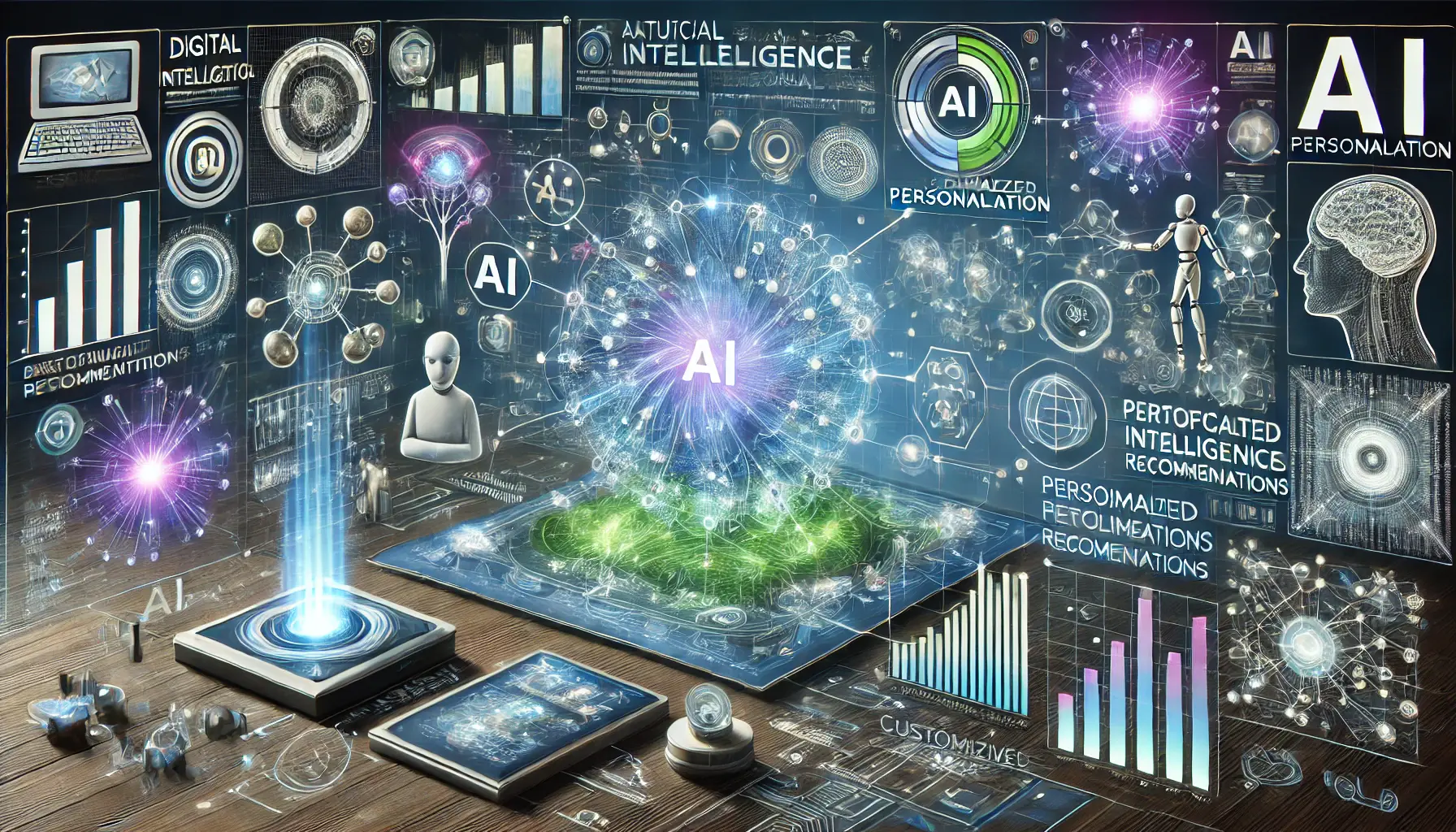
Visualizing AI-driven personalization in digital marketing, with AI systems dynamically adjusting content based on user behavior.
AI-Driven Personalization
Artificial intelligence is revolutionizing how ads are personalized.
AI algorithms analyze vast amounts of data to understand user behavior, preferences, and intent, enabling the creation of highly targeted ads that resonate with individual users.
This approach enhances user engagement and improves conversion rates.
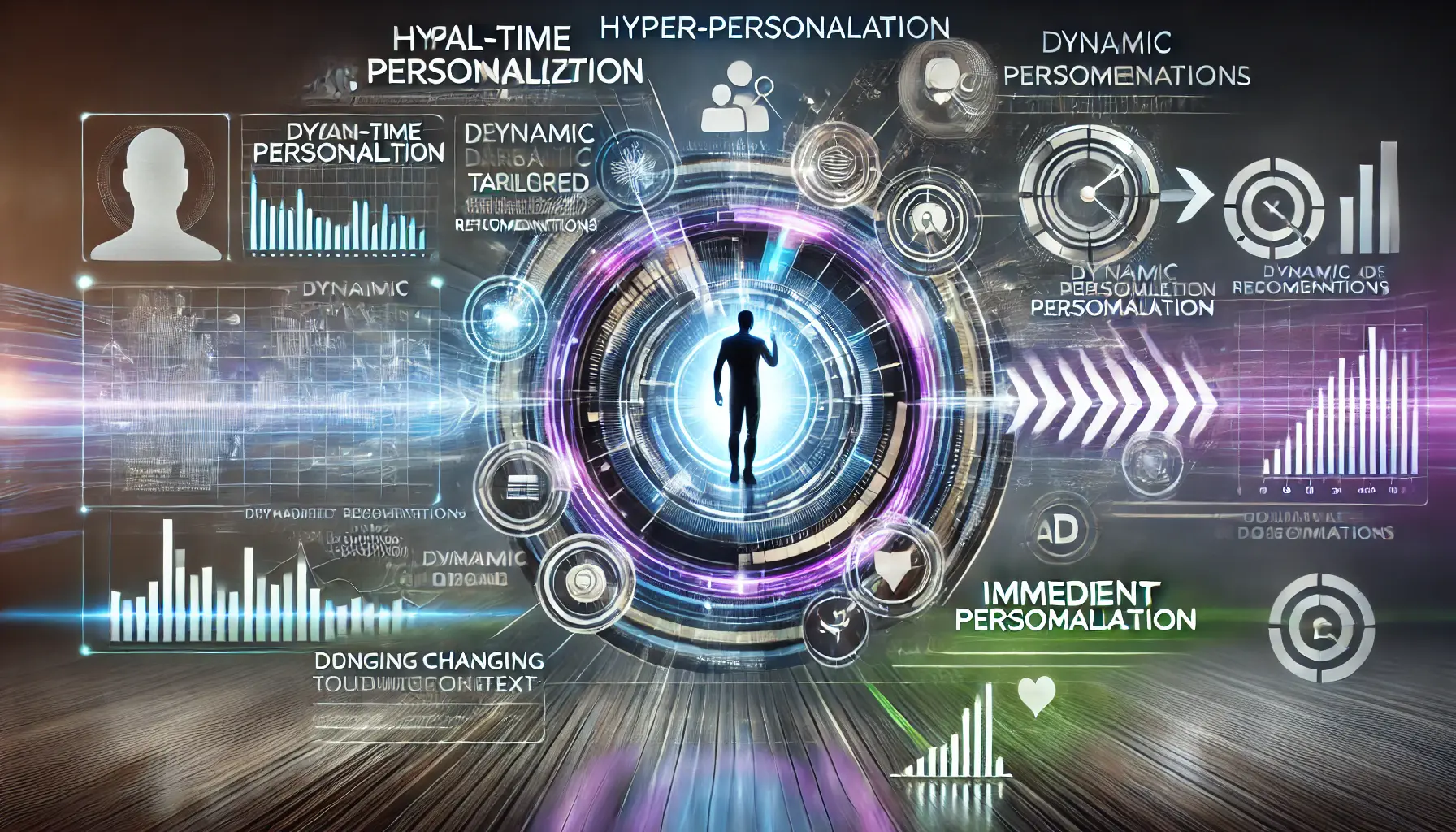
Visualizing hyper-personalization with real-time tailored content and dynamic ads based on user behavior and preferences.
Hyper-Personalization
Building upon AI capabilities, hyper-personalizationAn advanced form of personalization that uses real-time data to tailor content uniquely for each user. involves delivering real-time, tailored content to users based on their immediate context and behavior.
This strategy goes beyond traditional segmentation, aiming to create a unique experience for each user, thereby increasing relevance and engagement.
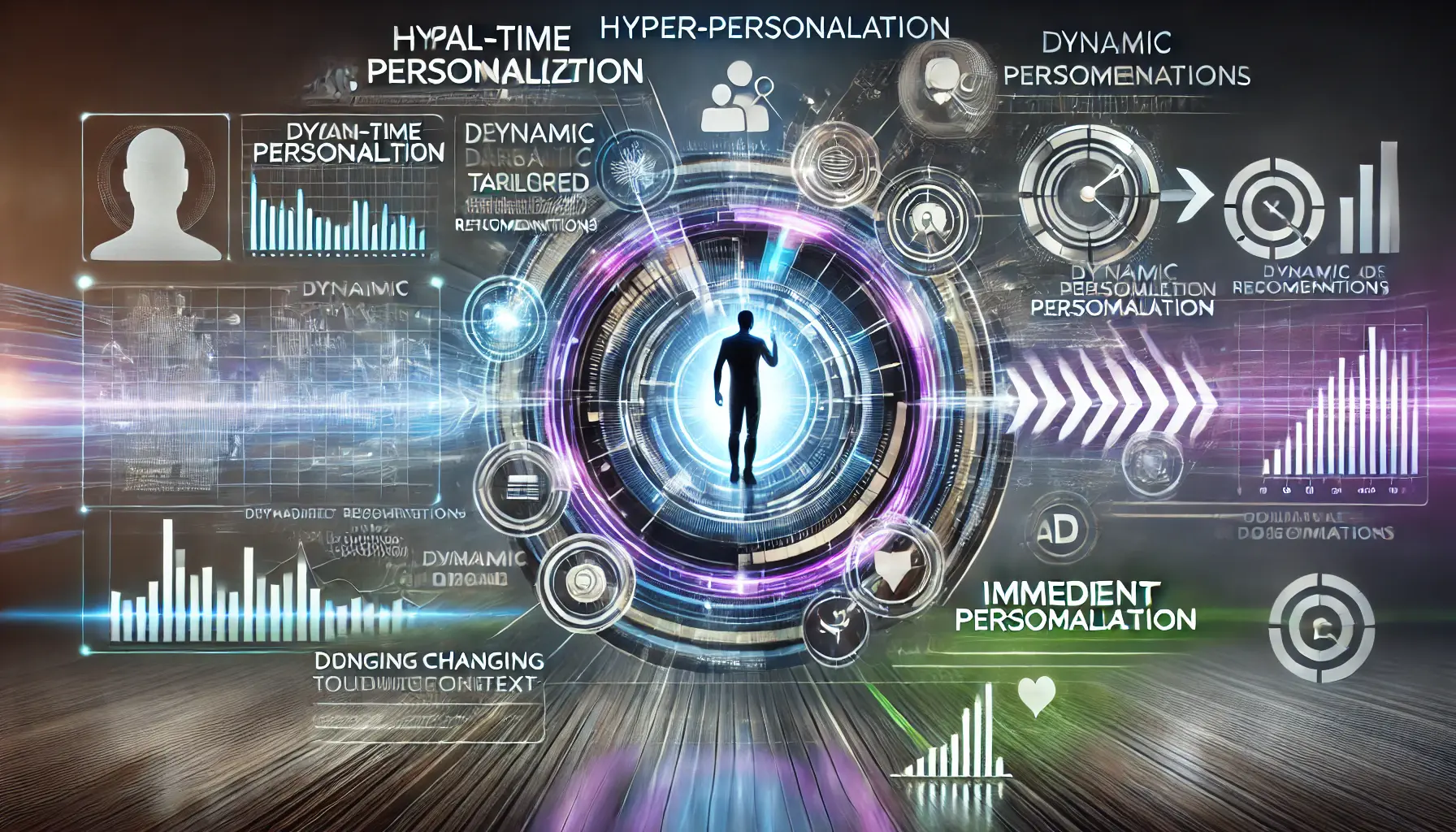
Visualizing hyper-personalization with real-time tailored content and dynamic ads based on user behavior and preferences.
Privacy-Conscious Personalization
With growing concerns over data privacy and the phasing out of third-party cookies, marketers are shifting towards privacy-conscious personalization strategies.
Utilizing first-party dataData collected directly by a company from its own audience, such as website analytics or purchase history. and contextual targeting allows for personalized advertising while respecting user privacy and complying with regulations.

Visualizing the integration of conversational AI through chatbots and virtual assistants across digital platforms.
Integration of Conversational AI
The incorporation of conversational AI, such as chatbots and virtual assistants, into advertising strategies enables interactive and personalized user experiences.
These tools can engage users in real-time, providing personalized recommendations and assistance, thereby enhancing the effectiveness of ad campaigns.
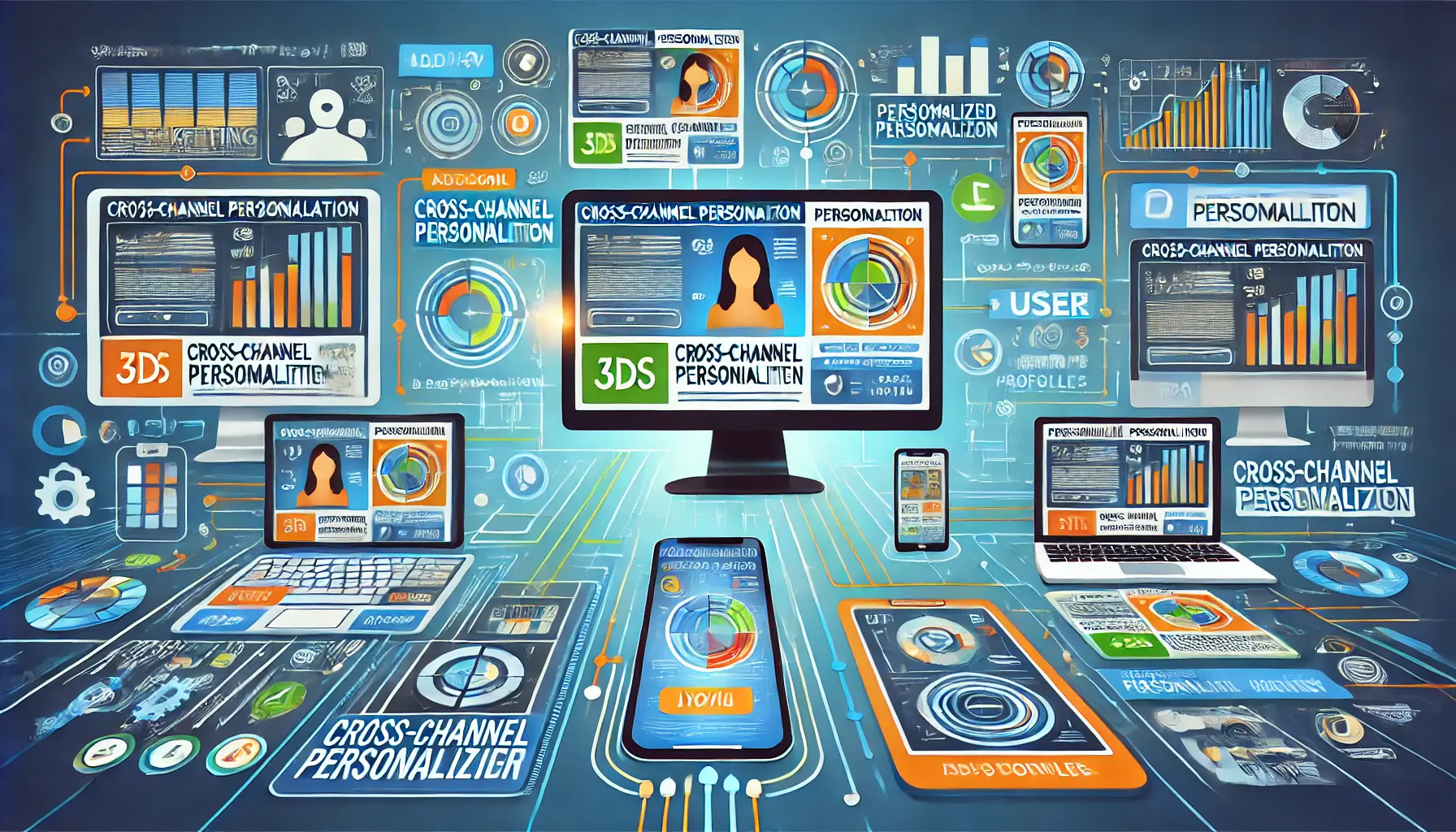
undefined
Cross-Channel Personalization
Ensuring a consistent and personalized user experience across multiple channels is becoming increasingly important.
Through cross-platform data and insights integration, marketers can offer more cohesive and personalized messaging, enhancing user engagement and loyalty.
By embracing these future trends in content personalization for Google Ads, marketers will be better equipped to craft more engaging, relevant, and effective advertising campaigns, driving superior results and forging deeper connections with target audiences.
AI-driven personalization and hyper-personalization are shaping the future of content personalization, offering deeper engagement and innovative approaches.

Visualizing the mastery of content personalization in Google Ads with data-driven optimization and audience-targeted ads.
Mastering Content Personalization in Google Ads
Content personalization in Google Ads has emerged as a powerful strategy to connect with your audience on a deeper level.
By tailoring ad experiences to match individual user preferences, marketers can improve engagement, drive higher conversions, and achieve a stronger return on investment.
This article has explored the essential elements of content personalization, from defining its purpose to implementing best practices and embracing future trends.
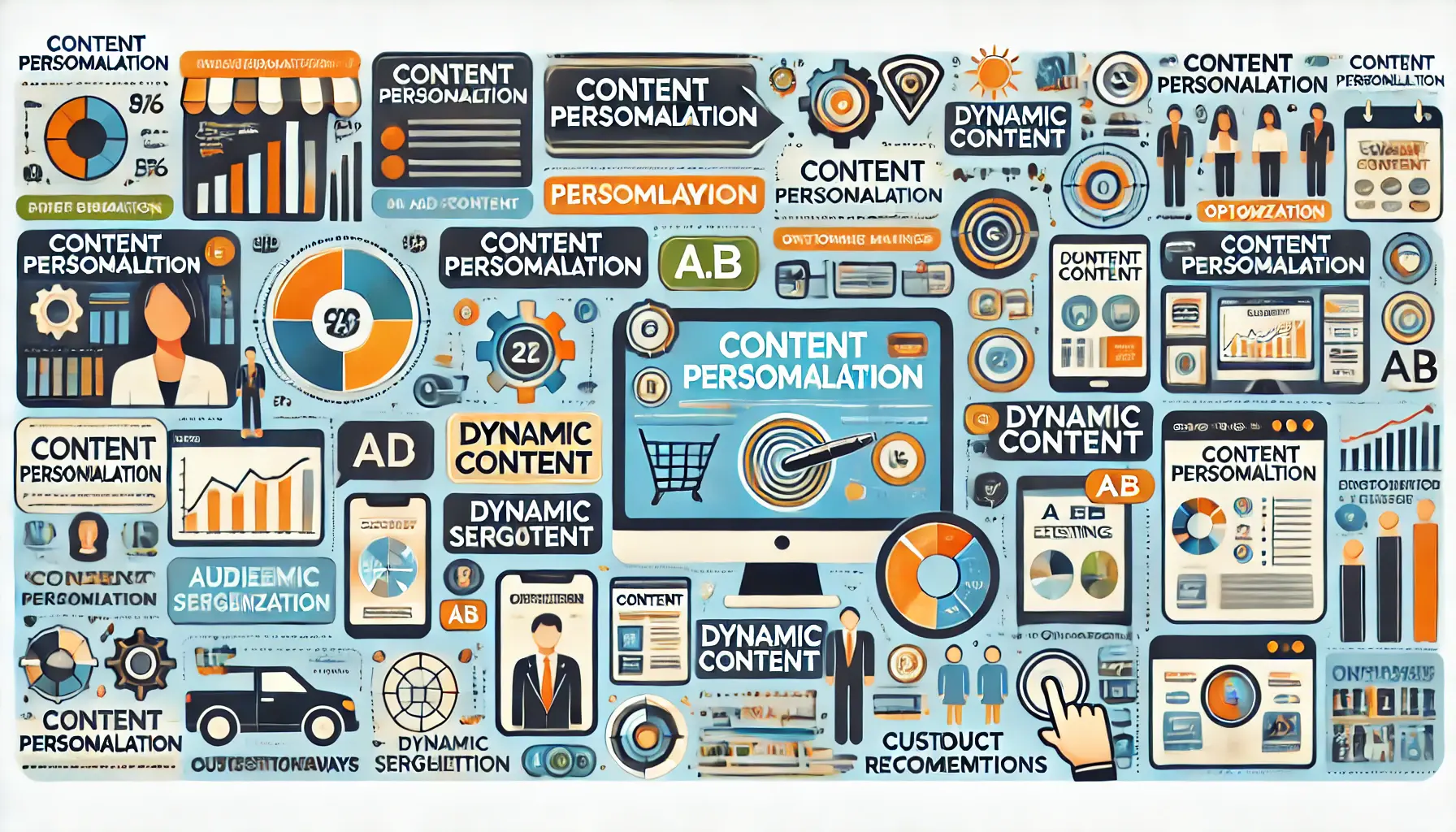
Visualizing the key takeaways on content personalization, including customized ads, dynamic content, and performance metrics.
Key Takeaways on Content Personalization
Following are a few ways to successfully deploy content personalization in your Google Ads campaigns:
- Understand Your Audience: Leverage data to segment the audience by demographics, behaviors, and preferences. This ensures that your ad resonates with your audience.
- Create Relevant Ad Copy: Develop targeted messaging aimed directly at the needs of different audiences and dynamically match it in real time with user intent through dynamic content.
- Optimize Landing Pages: Ensure ad copy and landing pages match seamlessly, using dynamic elements to improve user experience and conversion rates.
- Measure and Analyze: Follow KPIs such as click-through rates, conversion rates, and return on ad spend to determine the effectiveness of your campaigns.
- Adopt Future Trends: Stay ahead with AI-driven personalization, hyper-personalization, privacy-conscious strategies, and cross-channel integration.
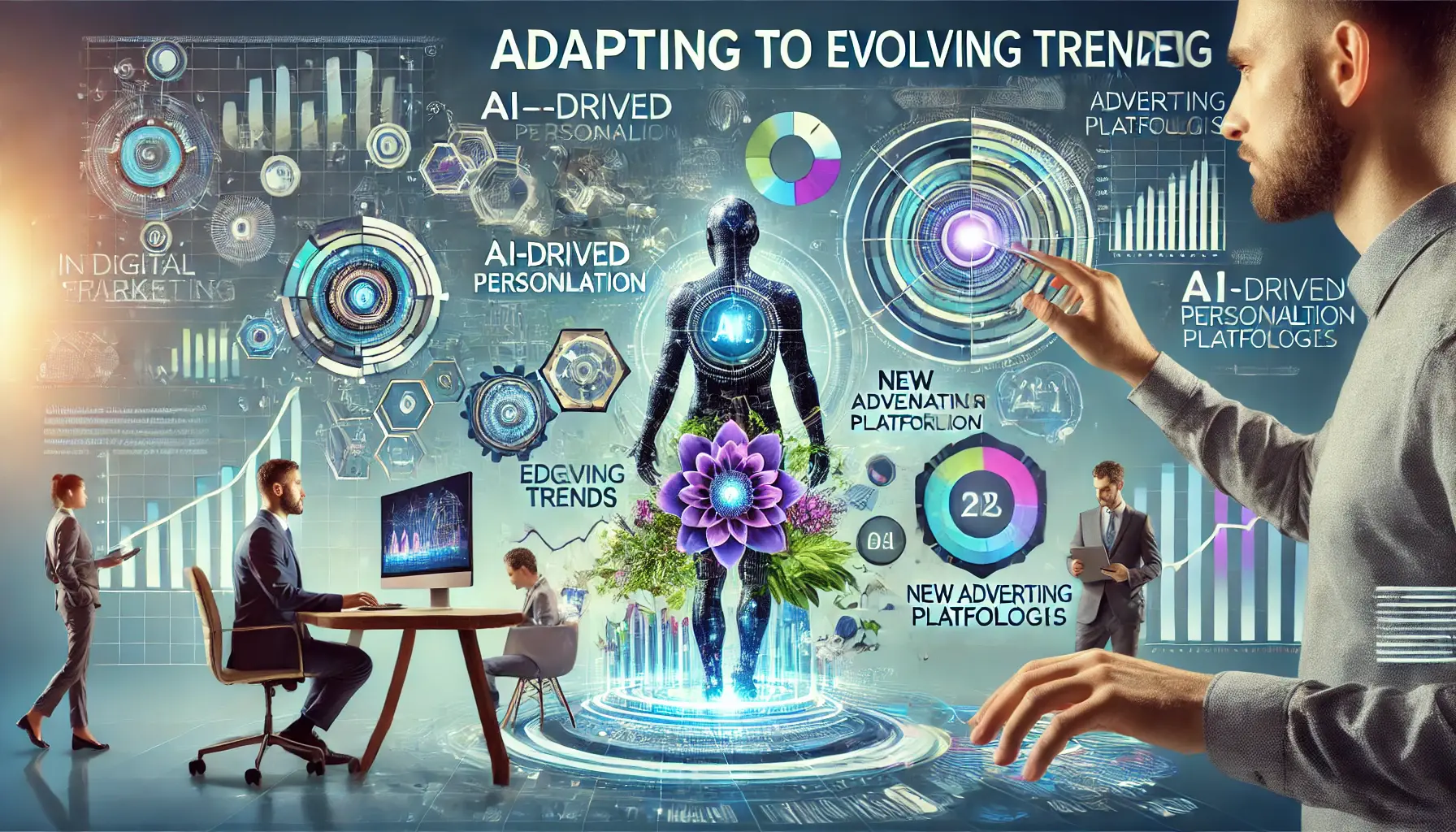
Visualizing the importance of adapting to emerging digital marketing trends and technologies.
The Importance of Adapting to Evolving Trends
The digital marketing landscape is continually evolving, and keeping up with emerging trends in content personalization is critical.
As AI and data analytics advance, the potential to deliver hyper-personalized experiences will only grow.
Additionally, adapting to privacy-conscious approaches will help maintain user trust while complying with regulations.
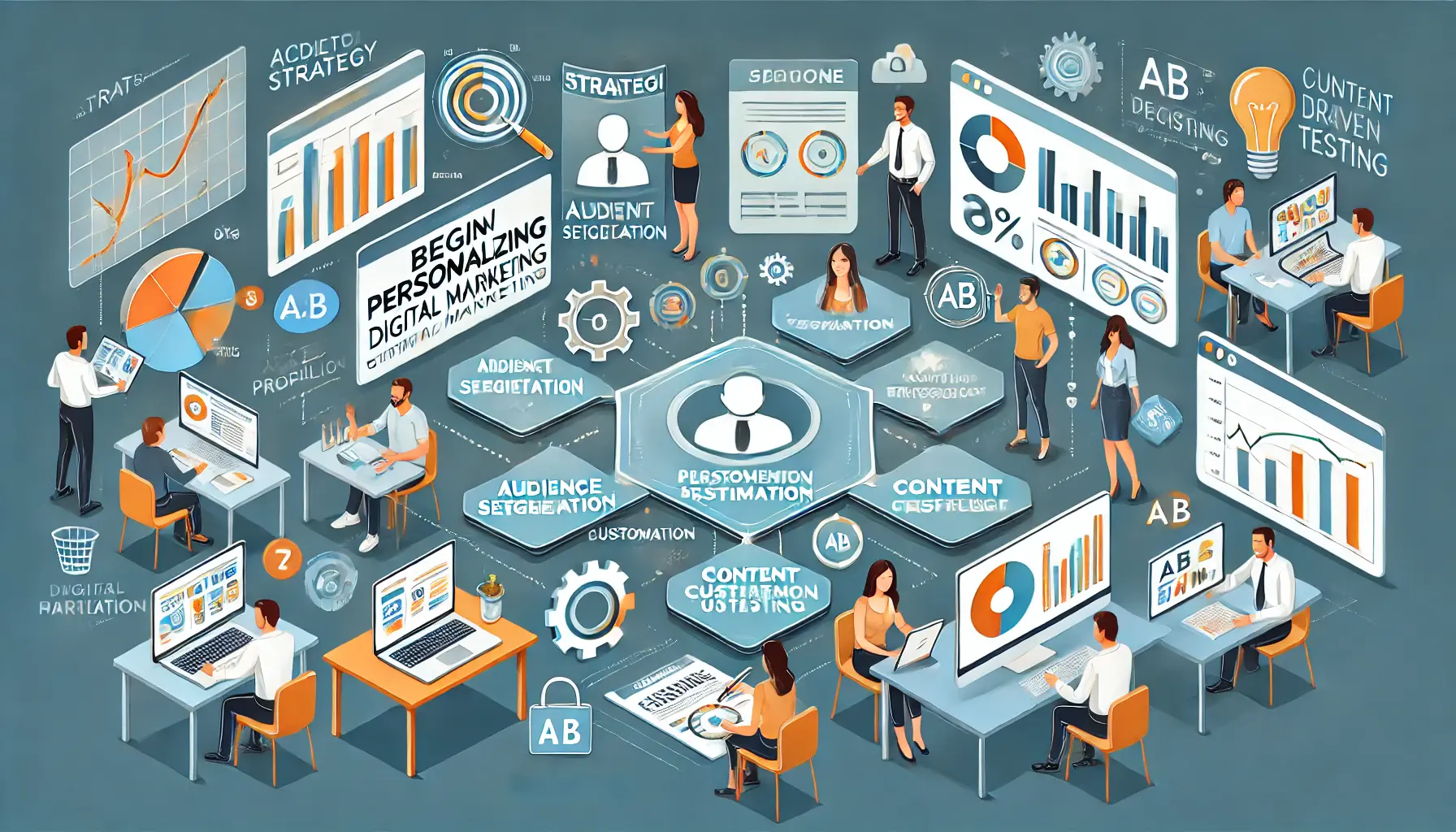
Visualizing actionable steps to begin personalizing digital marketing campaigns through strategies, audience segmentation, and content customization.
Actionable Steps to Begin Personalizing Your Campaigns
Content personalization requires a clear strategy and proper tools to get started.
Here’s how you can begin:
- Audit Your Current Campaigns: Evaluate the performance of your current ads to determine where personalization might make a difference.
- Invest in Analytics Tools: Use Google Analytics and heatmaps to understand user behavior and preferences.
- Try A/B Testing: Continuously test and refine your personalized content to discover what works best for your audience.
- Scale Winning Strategies: Once you identify successful personalization techniques, scale them across all your campaigns to maximize reach and impact.

Visualizing the successful conclusion of personalized digital marketing campaigns, with a focus on optimization and results.
Conclusion
Mastering content personalization in Google Ads is a journey—a fun ride that requires creativity, data-driven insights, and adaptability.
Focusing on the strategies within this article will help you create impactful connections with your audience, stand out above the competition, and achieve long-term success in advertising.
Begin incorporating these methods of personalization today and watch as your campaigns blossom into fully empowered engagement and growth catalysts.
Combining data insights, creativity, and adaptability ensures long-term success in content personalization strategies.
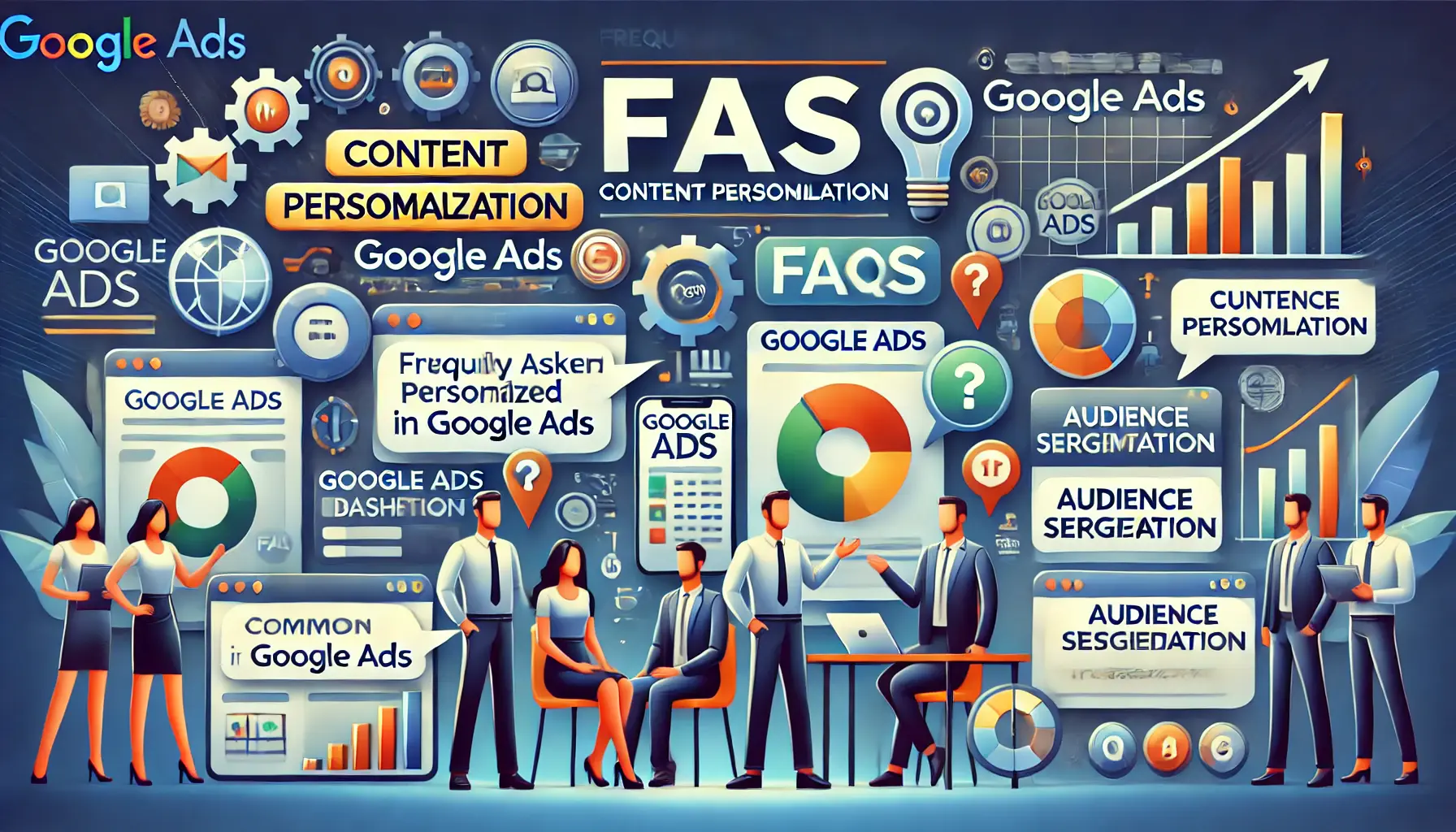
Visualizing the process of answering frequently asked questions about content personalization in Google Ads, with a focus on data analysis and audience segmentation.
Your campaigns can be managed by an agency specialized in Google Ads, check out our service page.
Frequently Asked Questions on Content Personalization in Google Ads
Content personalization in Google Ads involves tailoring ad content by using user data such as browsing history, demographics, and preferences to increase relevance and drive engagement.
Personalization increases ad relevance, leading to higher click-through rates, improved user engagement, and better conversion rates, ultimately enhancing return on investment.
Data such as user demographics, browsing history, search queries, and past purchase behavior are commonly used to personalize ads effectively.
Utilize tools like dynamic ad insertion, audience segmentation, and responsive search ads to deliver personalized content to different user segments.
Yes, it’s essential to comply with data privacy regulations and ensure transparency with users about data collection and usage practices.
Yes, via Google’s My Ad Center, users can choose to personalize ad topics and brands to see more or fewer ads about particular subjects.
No, turning off ad personalization stops personalized ads, but you will still see non-personalized ads based on general factors like location and website content.
Google uses data responsibly, adhering to privacy policies and regulations, and provides users with controls to manage their ad preferences and data usage.
The future includes AI-driven personalization, hyper-personalization, privacy-conscious strategies, and cross-channel integration to enhance user engagement.
